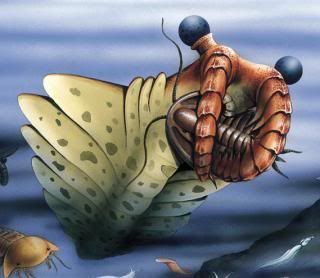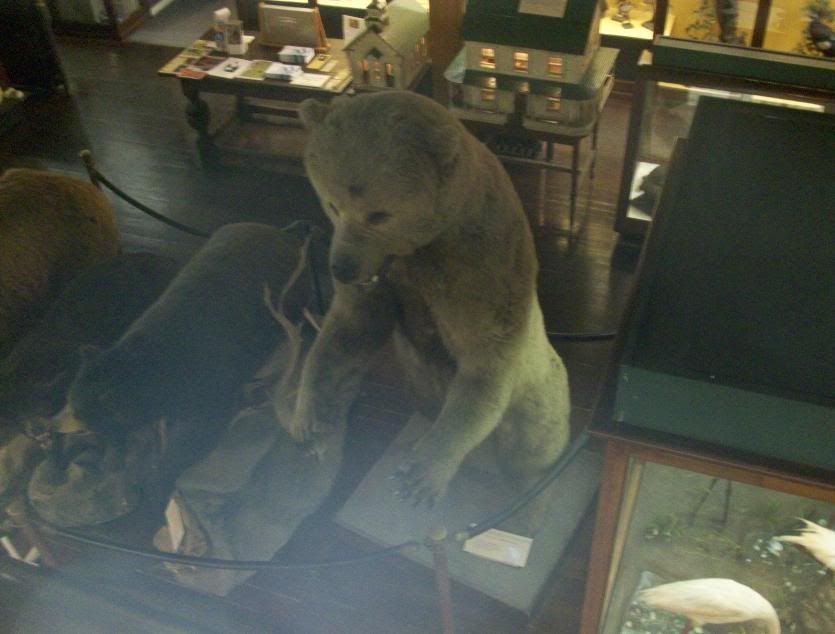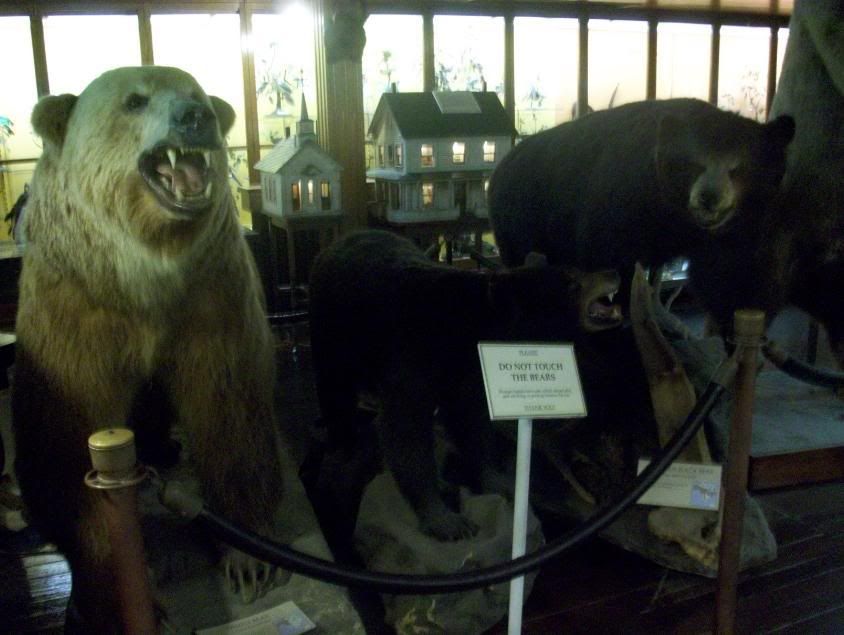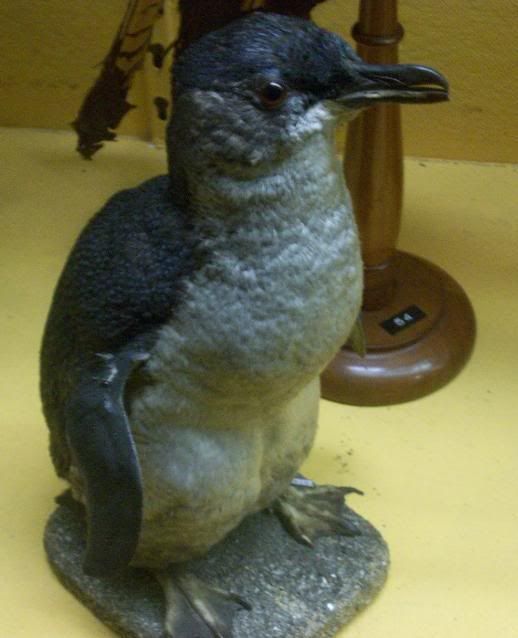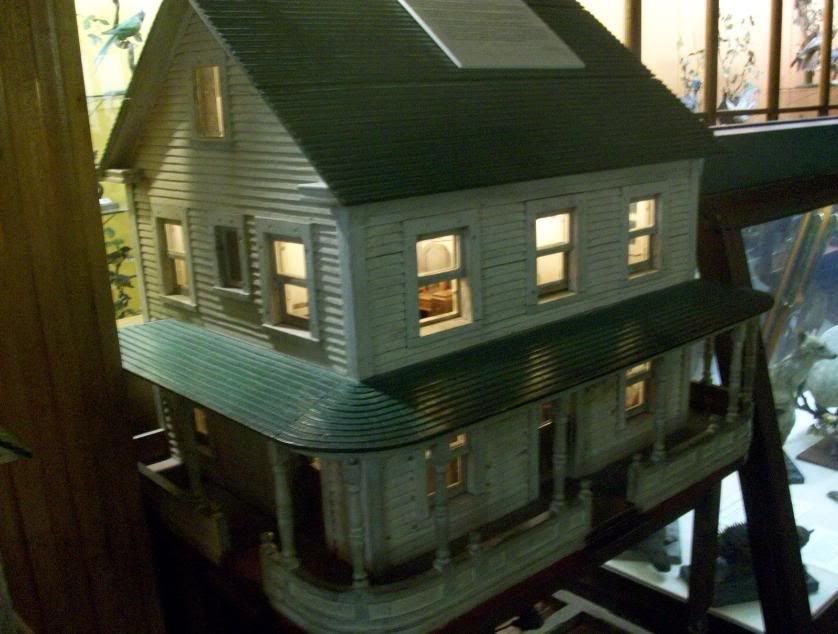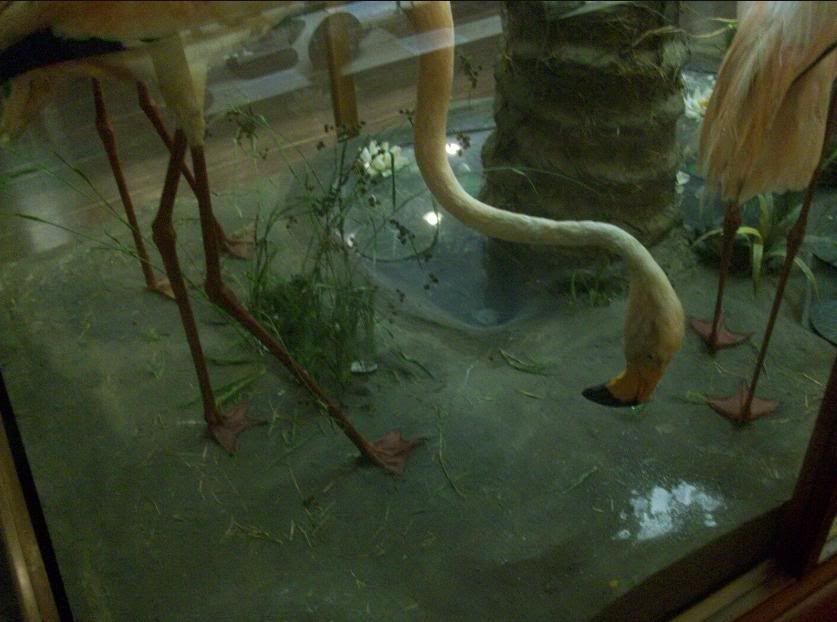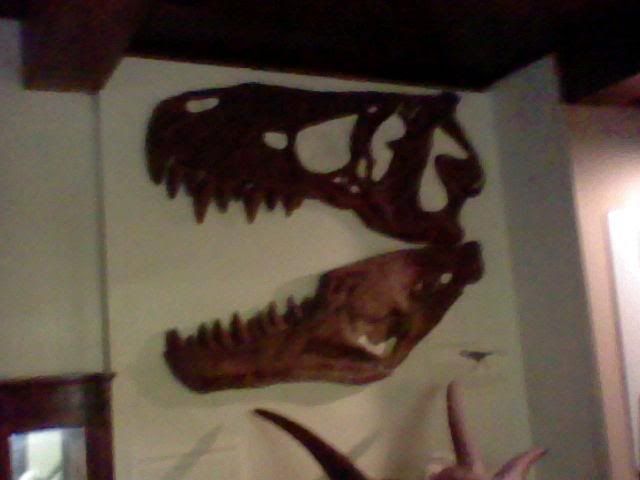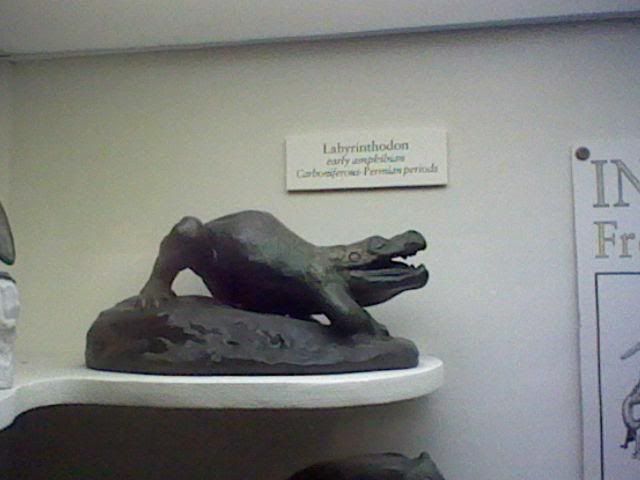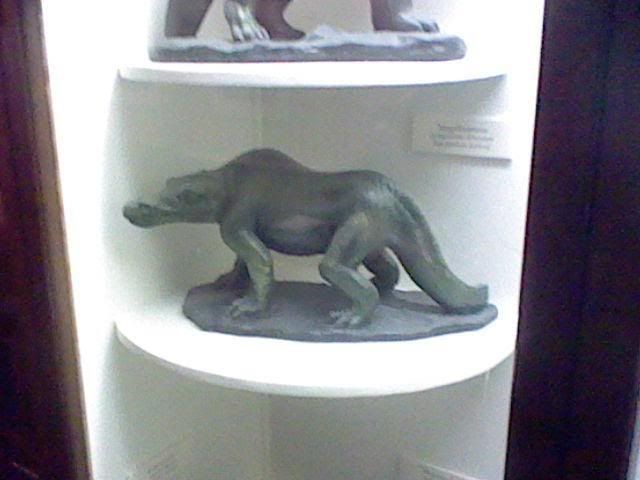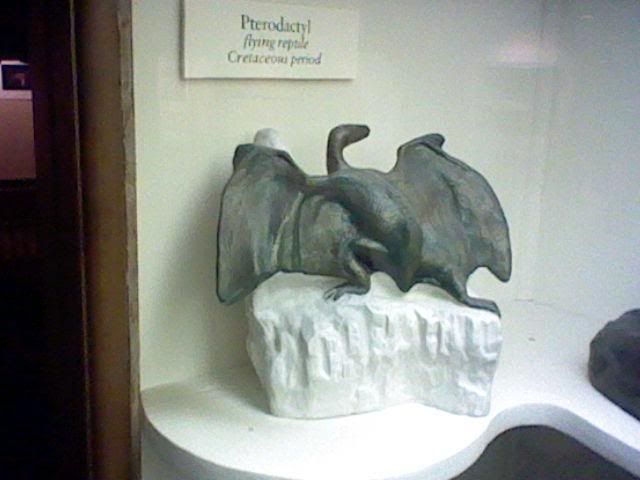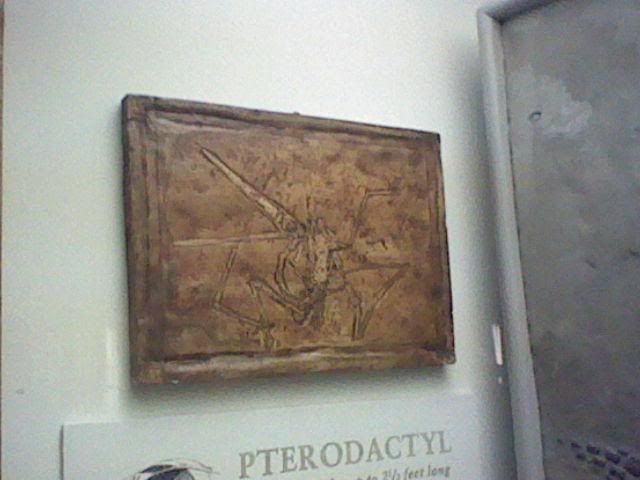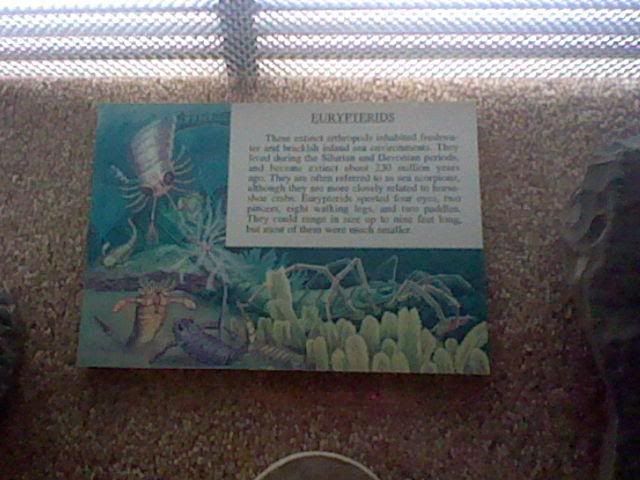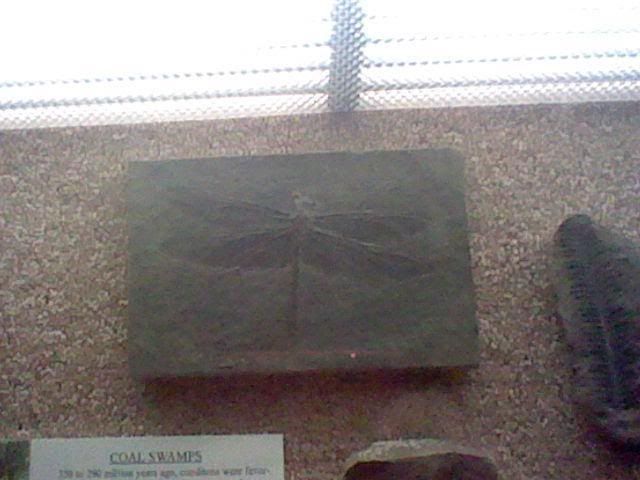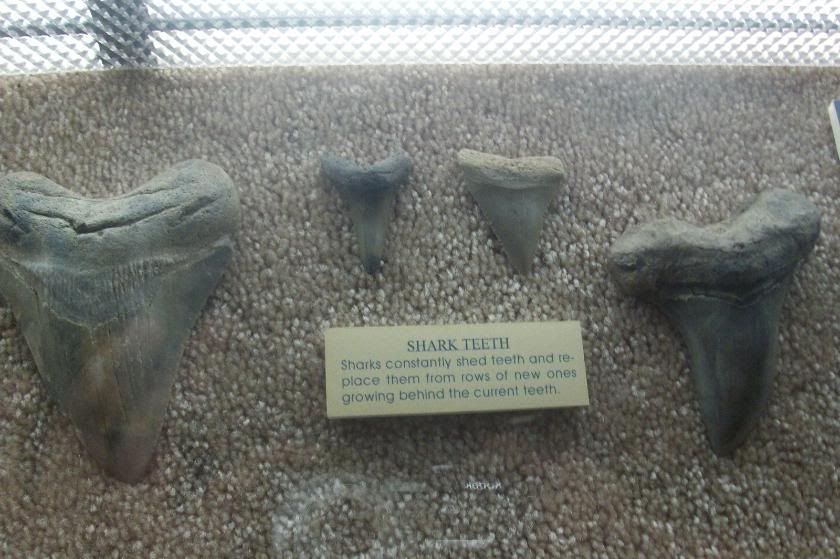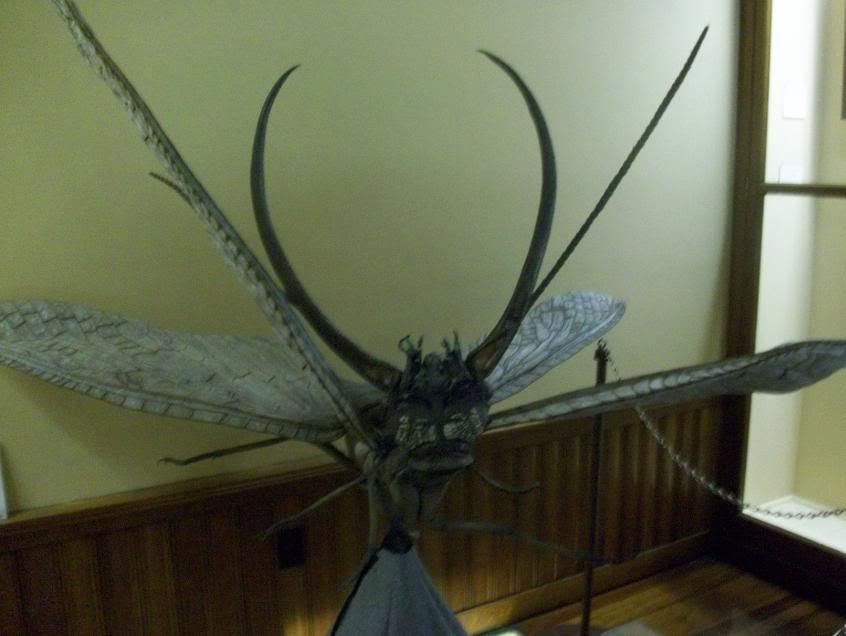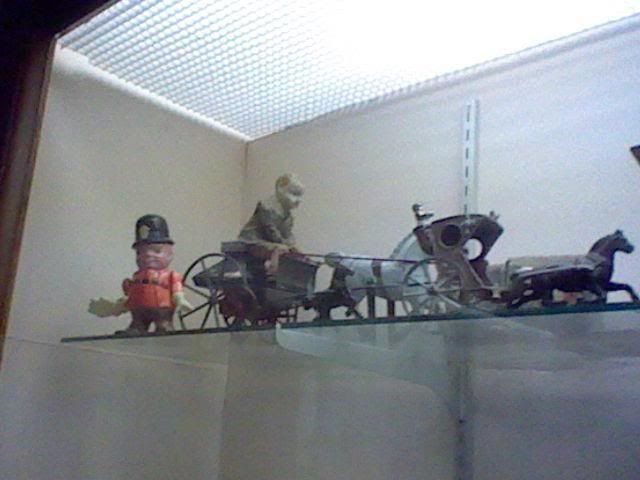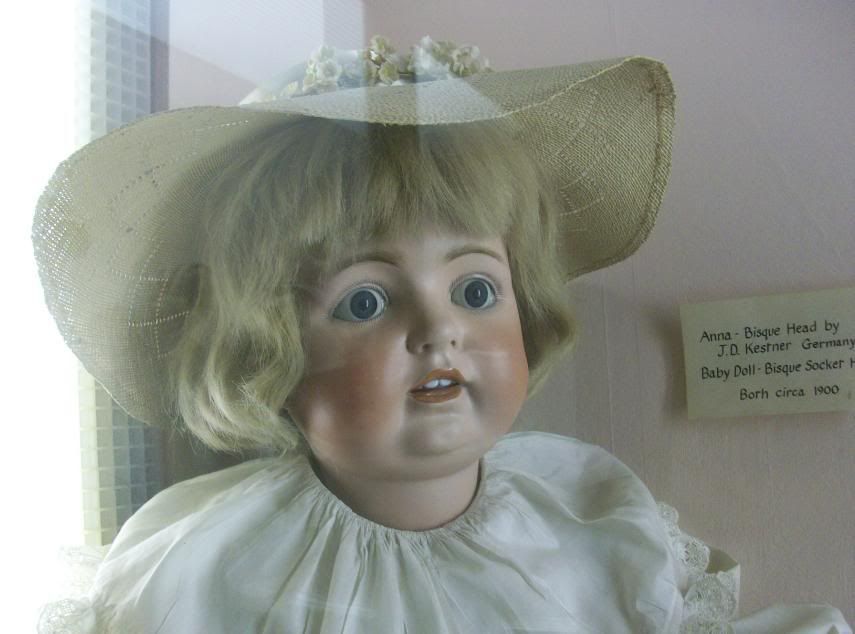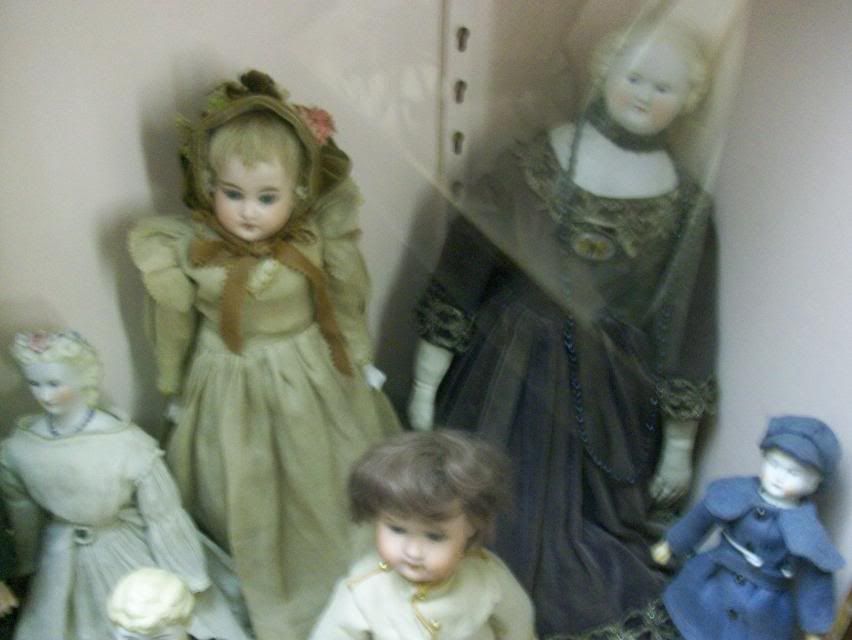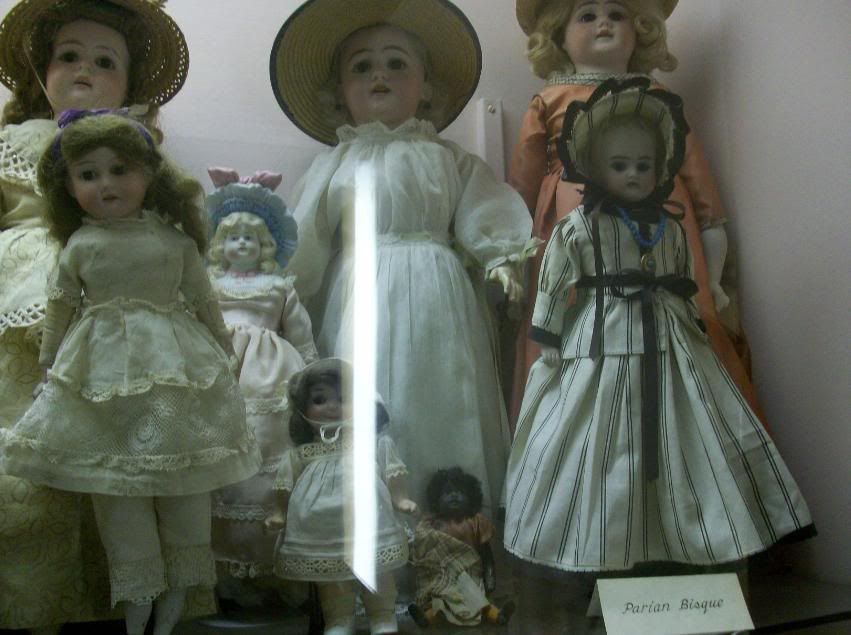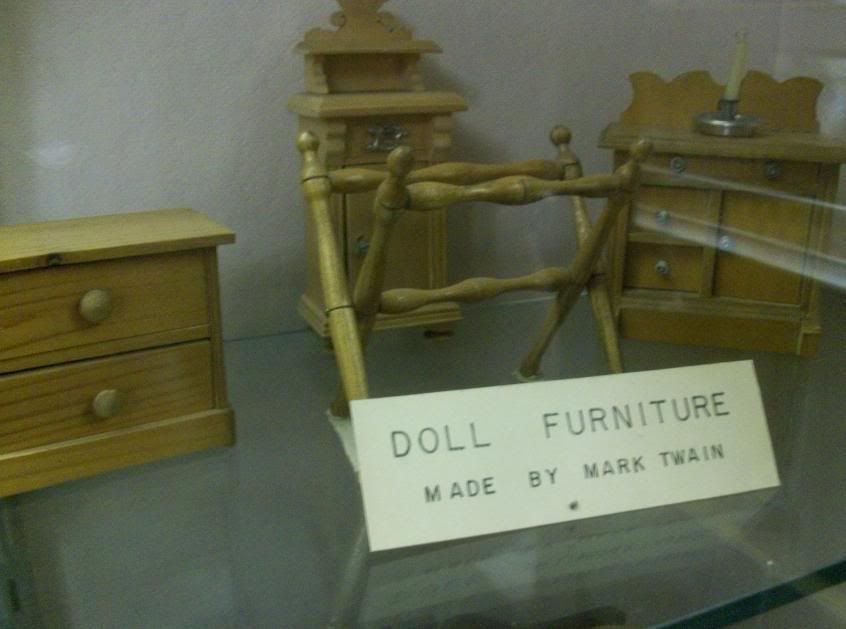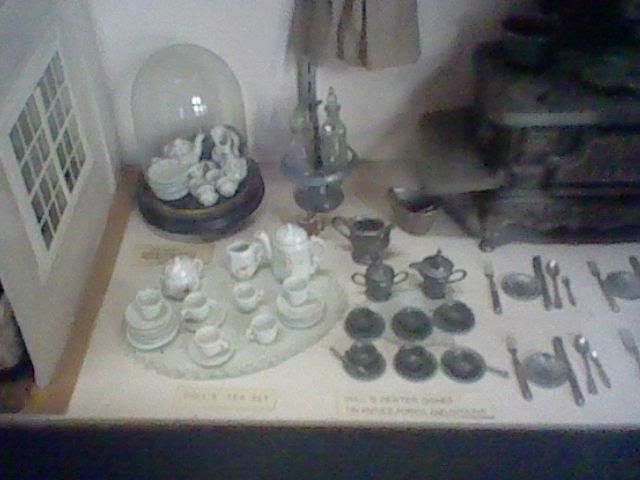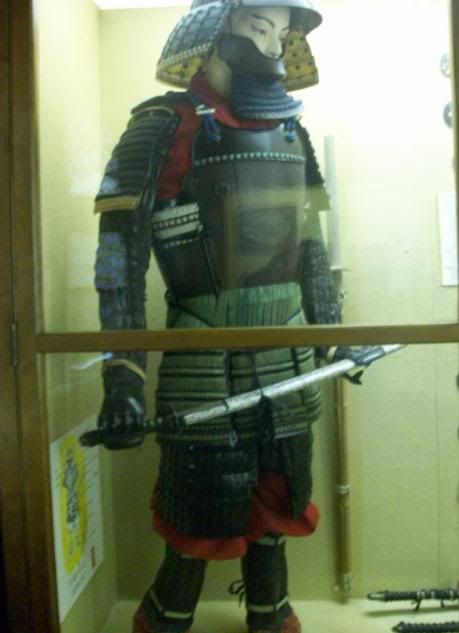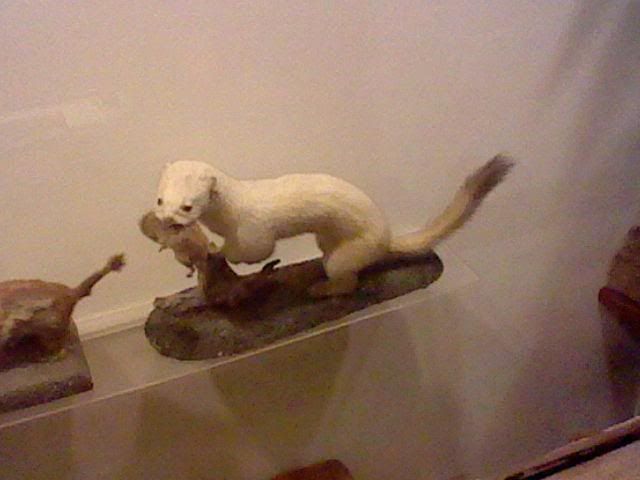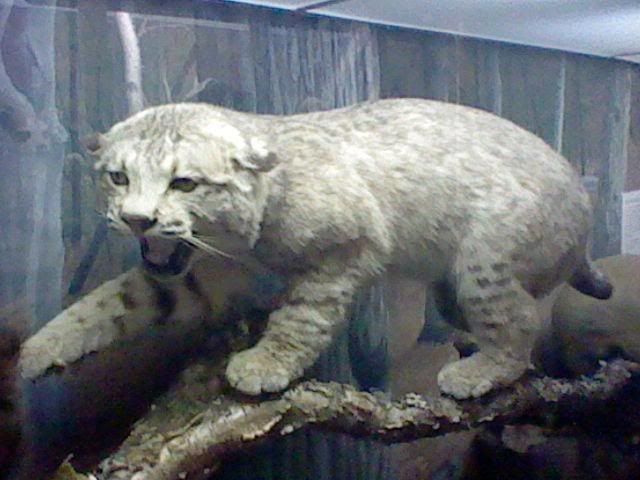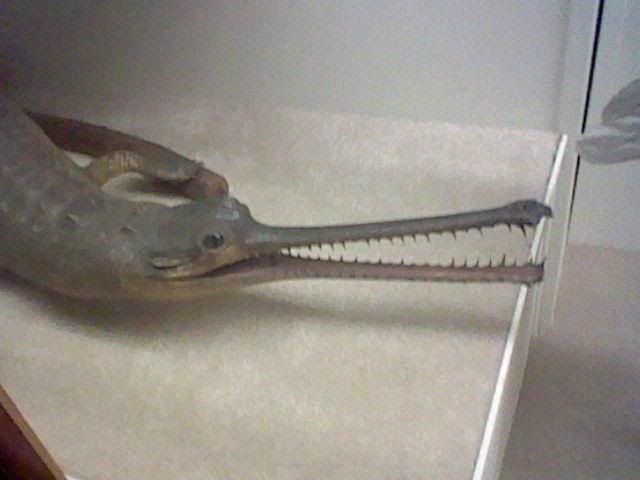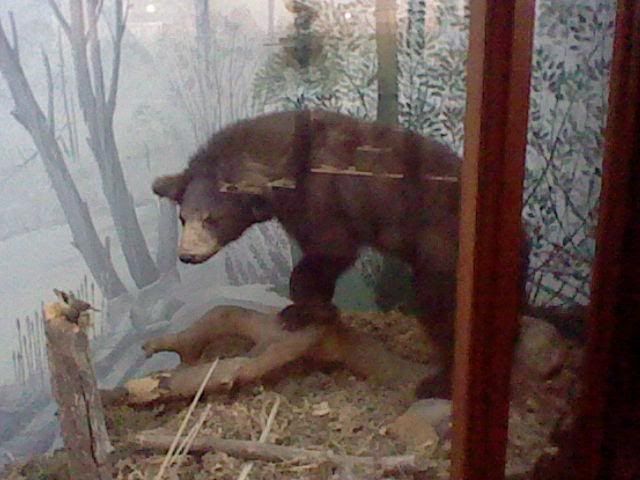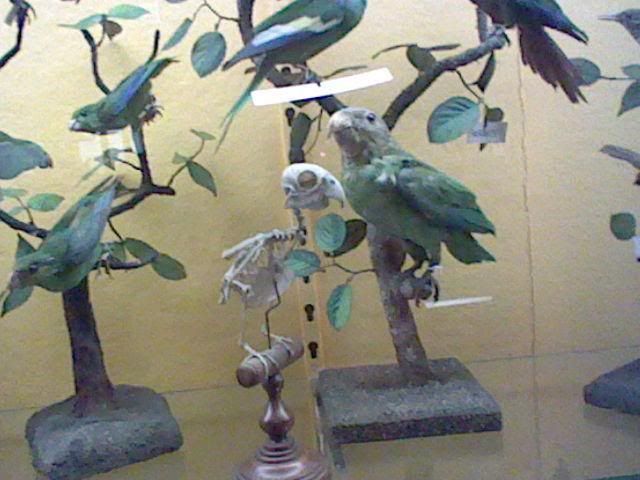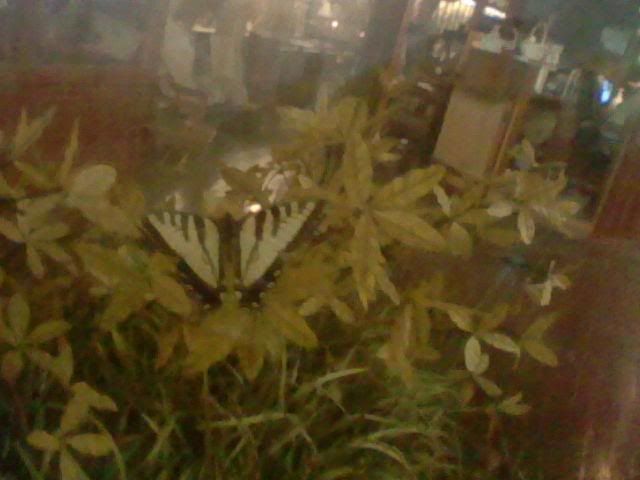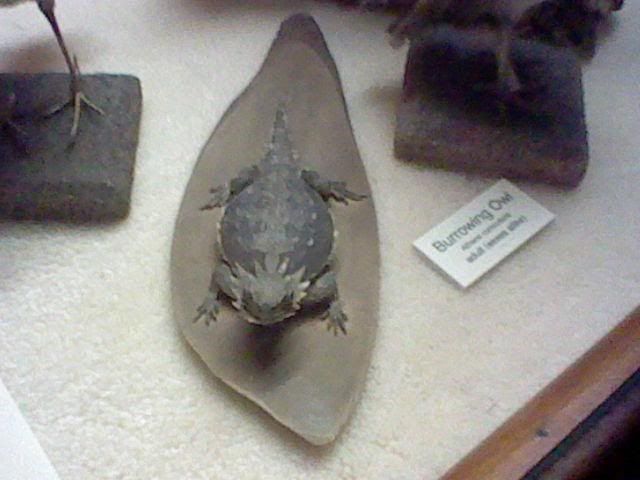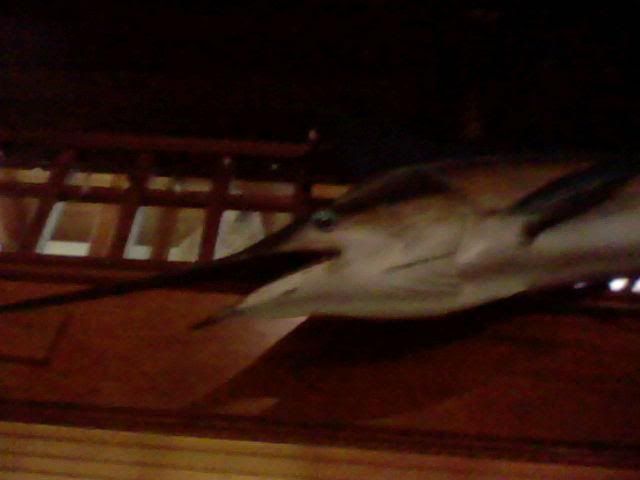Last week I watched Walking With Dinosaurs, and not for the first time since I have memories of seeing it as a child on TV. It's a well-known British documentary made in the early 2000s that got a lot of attention for showing people a modern interpretation of dinosaurs and their kin that the older books and shows of the previous decades had mostly ignored (aside from the very popular Jurassic Park, which while not totally accurate was a good deal better than the old stuff). Together, Jurassic Park and Walking With Dinosaurs helped cement the image of dinosaurs as active, advanced, exciting animals into the public's mind. Before this, the prevailing view was that they were slow, sluggish, and unintelligent animals that died out from being unable to adapt to the world around them. The long-necked sauropods lived in the water and even the meat-eaters were pokey. However, all of those beliefs went out the window when people were finally exposed to the much more accurate findings made by scientists in more recent years. It took fancy computer graphics to get people to understand - even before Jurassic Park, a fantastic book released in the eighties titled The Dinosaur Heresies outlines the case for why the old theories were wrong and what the dinosaurs were really like. It's probably my favorite book on dinosaurs and I recommend it.
So you probably knew about Walking With Dinosaurs, but did you know it received two follow-up films? They were titled Walking With Monsters and Walking With Beasts. Walking With Monsters reviews the evolution of life before the dinosaurs, which began in earnest about 500 million years ago. The ruling predator of the time was the six-foot Anomalocaris, pictured below. It was a creature believed to be split off from the ancestors of modern arthropods (insects, spiders, centipedes, and crabs are examples of arthropods). No modern relatives of this half-billion-year-old creature exist.
Also featured in Walking With Monsters are three-foot-long scorpions, mighty 15-foot predatory fish, and the famous Dimetrodon, a reptile known for the large sail on its back, believed to be used to regulate body temperature.
Walking With Beasts goes into more familiar territory. It focuses on what happened to life on earth after the dinosaurs. For a time, it was as if dinosaurs had never left - one of the first major predators to appear was Gastornis, a giant bird the size of a human that probably behaved much like the famous raptor dinosaurs. In recent years, the theory has been advanced that dinosaurs and birds are so closely intertwined on the family tree that they cannot be properly separated, meaning that birds are a specialized group of dinosaurs that survived the mass extinction 65 million years ago. I may go into more detail about these ideas another time.
Later in the earth's history, the mammals finally took over, establishing themselves as the dominant creatures on earth. The later episodes of Walking With Beasts (it was a six-part miniseries) include spotlights on sabertooth cat and wooly mammoth societies, as well as Australopithecus - an ancestor of the human race. The Australopithecus episode depicts a small tribe of the chimplike animals and their daily trials. The sabertooth episode follows the story of Half-Tooth, a big, strong male who broke one of his sabers in a fight and now manages a pride of sabertooths. The final episode, taking place less than half a million years ago, is the story of Ice Age life, particularly the yearly migration of wooly mammoths as they move south in the fall to avoid the worst of winter.
All of the Walking With films are valuable looks into the past, and are engaging tools for learning more about the history of life on Earth. Just be prepared for some emotional scenes if you connect with animals - nature's constant struggle of predator against prey combined with the occasional natural disaster means multiple creatures die in every episode.
Thursday, April 12, 2012
Friday, March 23, 2012
The Fairbanks Museum - The First Floor Continued
Here's one last post about the Fairbanks Museum. My mom shot some photographs of exhibits I didn't, or my photos came out poorly, so we return to the first floor one more time.
Ah, the bears. The first things you see when you walk into the museum are the bears. They stand front and center, without any glass to separate you from them to make it even more up-close and personal. There is an alarm set to go off if you touch them, though, plus a bunch of signs that urge you to not touch the bears.
Kodiak and polar bears are the largest land carnivores on the planet, and other species of bear are no slouches either. They're all here, and have undoubtedly been at the forefront of many a family photo. I suspect they're amongst the most-photographed attractions in the museum.
The polar bear is one of the most famous and iconic animals, and is probably the first animal you think of when you think "Arctic". If you also think of "Antarctic", take note - polar bears only live at the North Pole, not the South Pole. Meanwhile, penguins only live at the South Pole. Therefore, if you see penguins and polar bears together in a cartoon or something, the creator either didn't do their homework or didn't care about being accurate when making cartoons (a perfectly reasonable attitude if you're not trying to teach the kids).
Speaking of penguins, look what else Mr. Fairbanks collected. This penguin wasn't labeled for whatever reason, and birds aren't my strongest area of animal knowledge so I don't know what species this is.
I idly wondered if perhaps the Fairbanks museum had any extinct animals on display. Perhaps it does - the sheer number of birds makes it downright likely one or two of the species has dwindled away in the last 120 years. However, the two I looked for were more famous examples - the dodo and the passenger pigeon - and I didn't find either. I later looked up dodos and discovered my error - the dodo went extinct in the 1600s, well over a hundred years before Mr. Fairbanks was even born, meaning he could never have gotten one for his collection.
The passenger pigeon, however, was still alive when the museum opened - it went extinct in the 1920s. I imagine if Fairbanks had such a bird, though, it would feature a good-sized plaque to tell the sad story of this species, and how humans somehow managed to make the most common bird in the world extinct.
Fairbanks does have one bird that almost went extinct - the California Condor, a bird that until recently was close to total extinction with only 22 left in the world. Since then, a breeding program has increased their numbers to just under 400.
While we're on the subject of birds, my mom shot this picture of some sort of vulture or condor that I managed to miss entirely thanks to not looking up.
...Actually, this might be a California Condor. I think I somehow managed to see the plaque and miss the animal. That or Fairbanks has two of them, because I'm pretty sure I saw some sort of vulture behind glass. Oh well.
The first floor is dominated by animal specimens, but it's not exclusively their domain: there are a couple of other things to see here. This music box is one example - built in the late 19th century, it was sort of like a record player, but with just one record that played a wide variety of songs depending on where the needle is placed.
Mom loved this dollhouse. It was designed after the builder's dream house. He worked from the inside out and crafted intricate rooms with furniture, decorations, and little people to populate it.
As if that wasn't cool enough, in this house it's always Christmas.
The Fairbanks Museum flamingos are white instead of pink. This is because flamingos get their color from the krill they eat. If fed something else, they will lose their pink color. It also fades after death, as these 120-year-old birds prove.
I've shared a lot of Fairbanks Museum in these four blog posts, but I still think it's worth your time to visit if you've never been. Not only is there plenty of stuff I didn't include, but actually visiting in person is a different experience from looking at pictures online. Plus, admission is reasonable.
By the way, Fairbanks Museum, like any attraction worth its salt, has a gift shop. There were a lot of comically overpriced things in there - one of the worst being little rubber bugs being sold for a dollar each when I can buy a bag of eight of those same bugs at the Dollar Tree for the same price - but I found something that wasn't too ridiculously marked up, was fitting to the museum, and was even practical. The thing I found was a 4-dollar pencil sharpener shaped like a potbelly stove, and although Fairbanks doesn't feature any stoves it's still evocative of the many antiques the second floor showcases. I took it home and immediately sharpened all my pencils. Definitely a good choice for souvenir.
Ah, the bears. The first things you see when you walk into the museum are the bears. They stand front and center, without any glass to separate you from them to make it even more up-close and personal. There is an alarm set to go off if you touch them, though, plus a bunch of signs that urge you to not touch the bears.
Kodiak and polar bears are the largest land carnivores on the planet, and other species of bear are no slouches either. They're all here, and have undoubtedly been at the forefront of many a family photo. I suspect they're amongst the most-photographed attractions in the museum.
The polar bear is one of the most famous and iconic animals, and is probably the first animal you think of when you think "Arctic". If you also think of "Antarctic", take note - polar bears only live at the North Pole, not the South Pole. Meanwhile, penguins only live at the South Pole. Therefore, if you see penguins and polar bears together in a cartoon or something, the creator either didn't do their homework or didn't care about being accurate when making cartoons (a perfectly reasonable attitude if you're not trying to teach the kids).
Speaking of penguins, look what else Mr. Fairbanks collected. This penguin wasn't labeled for whatever reason, and birds aren't my strongest area of animal knowledge so I don't know what species this is.
I idly wondered if perhaps the Fairbanks museum had any extinct animals on display. Perhaps it does - the sheer number of birds makes it downright likely one or two of the species has dwindled away in the last 120 years. However, the two I looked for were more famous examples - the dodo and the passenger pigeon - and I didn't find either. I later looked up dodos and discovered my error - the dodo went extinct in the 1600s, well over a hundred years before Mr. Fairbanks was even born, meaning he could never have gotten one for his collection.
The passenger pigeon, however, was still alive when the museum opened - it went extinct in the 1920s. I imagine if Fairbanks had such a bird, though, it would feature a good-sized plaque to tell the sad story of this species, and how humans somehow managed to make the most common bird in the world extinct.
Fairbanks does have one bird that almost went extinct - the California Condor, a bird that until recently was close to total extinction with only 22 left in the world. Since then, a breeding program has increased their numbers to just under 400.
While we're on the subject of birds, my mom shot this picture of some sort of vulture or condor that I managed to miss entirely thanks to not looking up.
...Actually, this might be a California Condor. I think I somehow managed to see the plaque and miss the animal. That or Fairbanks has two of them, because I'm pretty sure I saw some sort of vulture behind glass. Oh well.
The first floor is dominated by animal specimens, but it's not exclusively their domain: there are a couple of other things to see here. This music box is one example - built in the late 19th century, it was sort of like a record player, but with just one record that played a wide variety of songs depending on where the needle is placed.
Mom loved this dollhouse. It was designed after the builder's dream house. He worked from the inside out and crafted intricate rooms with furniture, decorations, and little people to populate it.
As if that wasn't cool enough, in this house it's always Christmas.
The Fairbanks Museum flamingos are white instead of pink. This is because flamingos get their color from the krill they eat. If fed something else, they will lose their pink color. It also fades after death, as these 120-year-old birds prove.
I've shared a lot of Fairbanks Museum in these four blog posts, but I still think it's worth your time to visit if you've never been. Not only is there plenty of stuff I didn't include, but actually visiting in person is a different experience from looking at pictures online. Plus, admission is reasonable.
By the way, Fairbanks Museum, like any attraction worth its salt, has a gift shop. There were a lot of comically overpriced things in there - one of the worst being little rubber bugs being sold for a dollar each when I can buy a bag of eight of those same bugs at the Dollar Tree for the same price - but I found something that wasn't too ridiculously marked up, was fitting to the museum, and was even practical. The thing I found was a 4-dollar pencil sharpener shaped like a potbelly stove, and although Fairbanks doesn't feature any stoves it's still evocative of the many antiques the second floor showcases. I took it home and immediately sharpened all my pencils. Definitely a good choice for souvenir.
Tuesday, March 20, 2012
The Fairbanks Museum - The Second Floor Continued
The front right corner of the Fairbanks Museum upper balcony features a small but nonetheless very cool selection of fossils.
The T Rex skull does a pretty good job of grabbing your attention, as does the Styracosaurus skull beneath it. Everybody knows T Rex. Styracosaurus is a bit more obscure, but to put it simply, this dinosaur was a close relative of the very famous Triceratops, just with more horns.
This was REALLY cool. Fairbanks had some statues of dinosaurs based on how people in the Victorian era thought they looked and acted. This 19th-century depiction of dinosaurs has been proven false by more recent discoveries, particularly from the seventies and onward, but the creatures imagined by the earliest dinosaur researchers are nonetheless fascinating. That pterodactyl fossil was pretty awesome, too. Also on display are a Dimetrodon foot, a fossil of a tiny dinosaur called Compsognathus, and several plaques discussing how people perceived dinosaurs over the years and, of course, the extinction of the group.
Here's a couple of plaques talking about animals that lived long before dinosaurs. The cephalopod family has a long history, and it still endures today in the form of the octopus, squid, nautilus, and cuttlefish. Sea scorpions, however, have been extinct for a very long time. Honestly, I'm kind of saddened by that, as I think sea scorpions are some of the most amazing-looking of all prehistoric animals. I wonder if one day an artificial robot sea scorpion will swim in a tank in a museum of the future to show people how they looked and behaved...
Two more fossils, one of which is a dragonfly a bit larger than most modern species. The other appears to be a starfish ancestor. I'm not certain which of the fossils at Fairbanks are genuine - the dinosaur skulls are stated on their plaques to be casts. One fossil on display that I didn't photograph was a trilobite shell. Trilobites, which looked a bit like horseshoe crabs, were not only very common in pre-dinosaur oceans, but they also shed their shells a lot, so there are lots of trilobite fossils. For that reason I'm pretty sure the trilobite fossil, at least, was the real thing and not a cast.
For the same reason, these shark teeth are definitely genuine. Sharks shed their teeth constantly, as the little plaque points out, so fossils are plentiful.
My mom liked the fossils, but she was definitely more intrigued by the Civil War section, which was next. Here we see some Confederate money, from the brief period of time when the confederacy was its own country.
The Civil War section was very well put together, showing a Confederate's weapons and equipment on one side and a United States soldier's stuff on the other side. Also on display were a couple of newspapers from around the same time period. Their advertisements were included for extra humor - five cents an issue! Dollar-fifty for a full year! Highway robbery, I do declare!
Among the last things we got a good look at on the second floor was this scaled-up model of a dobsonfly. As you might expect, I was intrigued and my mom was creeped out.
The dobsonfly is a very strange insect that can be found in Vermont, although I've never seen one. They are among the largest insects in New England, reaching up to five inches in length with ten-inch wingspans, and the males have giant pinching jaws, like the model. However, they have no poison and their jaws are actually so gigantic as to be hilariously unwieldy. They can't harm humans. The females, however, have much shorter jaws which they can use to great effect to draw blood from a human who mishandles them. If you see a female dobsonfly, show respect!
Dobsonflies only live a few weeks. They spend most of their lives (a few years) as hellgrammites, which look like what you'd get if you crossed a caterpillar with a stag beetle. These ferocious babies possess the same jaws the female adult does regardless of gender, so watch out! They live in freshwater, and if they are present it's a sign that the water is very clean and free of pollution, since hellgammites cannot survive in dirty water.
In my next and for now final post on the Fairbanks Museum, we'll take one last look downstairs at the preserved animals. There will be bears.
And dollhouses.
The T Rex skull does a pretty good job of grabbing your attention, as does the Styracosaurus skull beneath it. Everybody knows T Rex. Styracosaurus is a bit more obscure, but to put it simply, this dinosaur was a close relative of the very famous Triceratops, just with more horns.
This was REALLY cool. Fairbanks had some statues of dinosaurs based on how people in the Victorian era thought they looked and acted. This 19th-century depiction of dinosaurs has been proven false by more recent discoveries, particularly from the seventies and onward, but the creatures imagined by the earliest dinosaur researchers are nonetheless fascinating. That pterodactyl fossil was pretty awesome, too. Also on display are a Dimetrodon foot, a fossil of a tiny dinosaur called Compsognathus, and several plaques discussing how people perceived dinosaurs over the years and, of course, the extinction of the group.
Here's a couple of plaques talking about animals that lived long before dinosaurs. The cephalopod family has a long history, and it still endures today in the form of the octopus, squid, nautilus, and cuttlefish. Sea scorpions, however, have been extinct for a very long time. Honestly, I'm kind of saddened by that, as I think sea scorpions are some of the most amazing-looking of all prehistoric animals. I wonder if one day an artificial robot sea scorpion will swim in a tank in a museum of the future to show people how they looked and behaved...
Two more fossils, one of which is a dragonfly a bit larger than most modern species. The other appears to be a starfish ancestor. I'm not certain which of the fossils at Fairbanks are genuine - the dinosaur skulls are stated on their plaques to be casts. One fossil on display that I didn't photograph was a trilobite shell. Trilobites, which looked a bit like horseshoe crabs, were not only very common in pre-dinosaur oceans, but they also shed their shells a lot, so there are lots of trilobite fossils. For that reason I'm pretty sure the trilobite fossil, at least, was the real thing and not a cast.
For the same reason, these shark teeth are definitely genuine. Sharks shed their teeth constantly, as the little plaque points out, so fossils are plentiful.
My mom liked the fossils, but she was definitely more intrigued by the Civil War section, which was next. Here we see some Confederate money, from the brief period of time when the confederacy was its own country.
The Civil War section was very well put together, showing a Confederate's weapons and equipment on one side and a United States soldier's stuff on the other side. Also on display were a couple of newspapers from around the same time period. Their advertisements were included for extra humor - five cents an issue! Dollar-fifty for a full year! Highway robbery, I do declare!
Among the last things we got a good look at on the second floor was this scaled-up model of a dobsonfly. As you might expect, I was intrigued and my mom was creeped out.
The dobsonfly is a very strange insect that can be found in Vermont, although I've never seen one. They are among the largest insects in New England, reaching up to five inches in length with ten-inch wingspans, and the males have giant pinching jaws, like the model. However, they have no poison and their jaws are actually so gigantic as to be hilariously unwieldy. They can't harm humans. The females, however, have much shorter jaws which they can use to great effect to draw blood from a human who mishandles them. If you see a female dobsonfly, show respect!
Dobsonflies only live a few weeks. They spend most of their lives (a few years) as hellgrammites, which look like what you'd get if you crossed a caterpillar with a stag beetle. These ferocious babies possess the same jaws the female adult does regardless of gender, so watch out! They live in freshwater, and if they are present it's a sign that the water is very clean and free of pollution, since hellgammites cannot survive in dirty water.
In my next and for now final post on the Fairbanks Museum, we'll take one last look downstairs at the preserved animals. There will be bears.
And dollhouses.
Monday, March 19, 2012
The Fairbanks Museum - The Second Floor
The second floor of the Fairbanks Museum is a balcony overlooking the first floor. While the lower floor focuses on preserved animals, the upper floor concentrates mostly on things that were never alive, like artifacts from other cultures, weapons from the Civil War, Victorian-era children's toys, and a collection of rocks and minerals. There's still some mounted heads and horns here, though, as well as a small collection of fossils and other prehistoric treasures.
You may notice some of the photos in this post are bigger and higher-quality than the last post. This is because, while I was in control of my 3DS and its camera, my mother had our true digital camera with her and made good use of it. We'll be returning to the first floor later to see more of her photography. Between the two of us, we managed to capture a great cross-section of the museum.
We entered the second floor from the back left corner of the museum (that's based on the direction you face when you enter). The first exhibit you'll see from this area is a collection of antique toys children played with in the 19th century. Most of the toys were either vehicles or dolls and dollhouses, though there were also a few other types of playthings such as brain teasers and bouncing balls.
Mom took a big interest in the doll collection, snapping many pictures of it all.
Here's some doll furniture made by the one and only Mark Twain. Mom just about fainted with excitement. Few other things in the museum elicited such a response.
Also present were enough sets of plates and teacups to hold the most spectacular tea party of all time.
Another mom-pleaser was the section covering Japan. Mom has a big interest in Japanese culture and snapped a number of photos of the many little figurines on display.
The samurai outfit got almost as much of a reaction as Mark Twain's doll furniture.
After Japan, the exhibits move on to a collection of rocks and minerals as we round the corner and move back towards the front of the museum. We didn't take any pictures, partly because neither of us found rocks that interesting and partly because this part of the museum was very poorly lit. Fortunately, we were approaching my favorite part of the second floor: the fossils.
In my next post we'll cover the second half of the balcony. Fossils, dinosaurs, the Civil War and a dobsonfly await in the next installment.
Saturday, March 17, 2012
The Fairbanks Museum - The First Floor
The Fairbanks Museum is located in St. Johnsbury, Vermont, a ways from my home but a doable distance. I've visited Fairbanks at least three times in my life, and it hasn't changed much.
The museum is housed in a great old Victorian building, and was opened to the public in 1891. Joseph Fairbanks was the man responsible, who believed in educating the public about natural history. His extensive collection of curios has been preserved here for future generations. My mother and I visited Fairbanks on the 15th, and I brought my Nintendo 3DS along because it has a rudimentary camera function. Here's the first of two photo tours of the museum - and there's a lot I didn't photograph.
You'll start seeing interesting things before even entering the museum. There are two lion statues out front that lend a special air to the place. The building itself is just as fancy, with ornate carvings of humans and gargoyles. I tried to photograph the gargoyles but the shot came out poorly.
The majority of things to see on the first floor are preserved animals. Mr. Fairbanks worked together with one particular taxidermist to create the majority of his collection, and most of these specimens are therefore the same age or older than the museum, meaning they are at least 121 years old. Nobody who was alive when this eagle was alive is still with us today, and yet the eagle still looks as big as life, ready to fly out of its glass enclosure and into the sky. Just think about that.
Of course, taxidermy isn't perfect. Some of the animals in the museum looked a little odd, like the taxidermist had messed up a bit when creating them. This was most common with the mammals. I focused on photographing the better-looking specimens, but if you ever go there and take a good look at the bobcats, you'll see what i mean.
This animal goes by many names. You've heard of cougars? How about pumas? Mountain lions? Did you know all of those animals are actually the same thing? The mountain lion/cougar/puma is the biggest cat in the "small cats" division of the cat family.
The distinction between "big cats" and "small cats" isn't about size - that's a lucky coincidence. It's just how the cat family tree splits up. One group of cats - the lion, tiger, jaguar, and leopard - evolved large size and the ability to roar. All other cat species - wildcats, lynx, cougars, and the domestic cat, to name a few - cannot roar. There's a third group, too - the cheetah split off from other cats early on, and that's why it may look "un-catlike" in some ways. Cheetahs cannot roar.
The Fairbanks Museum contains mostly "small cats". This tiger is the only exception, and he is quite well preserved. Many of the standard "jungle animals" are not present at Fairbanks - there are no preserved lions, gorillas, hippos, rhinos, giraffes, etc. Most of the more exotic animals from other countries are quite small, making this tiger stand out.
Fairbanks is home to two stuffed crocodilians. The first is an alligator, large and impressive. The second is this decidedly more obscure creature, the gavial or gharial. It looks like a miniature crocodile, except for the extremely long and thin jaws. These jaws are specially designed to catch fish, and the needle-like teeth help keep a grip on them so they don't slip away.
Also contributing to the crocodile family's presence at Fairbanks is this alligator skull. When you first enter the museum, start by going to your left and checking out the glass tank that contains this skull alongside a peacock and a number of other animals - this is the best place to begin a museum tour thanks to the informative signs that introduce Mr. Fairbanks and quote him directly concerning his mission and the founding of the museum. There's even a letter he wrote himself on display.
Most people who've gone to Fairbanks Museum will instantly associate one thing with it: Bears. Even though birds are by far the most common animals at the museum, its the collection of six or so bears that catch people's attention. I was unable to get a good photo of the biggest and most impressive bears, but they've got all of the classics: a black bear, a grizzly bear, and a mighty polar bear. They're very imposing and undoubtedly among the most popular of the exhibits.
There are literally thousands of birds at Fairbanks. There are several hundred hummingbirds alone. Bird taxidermy was in fashion in Fairbanks' time, so he wound up with quite a collection of dead feathered friends. I am not a particularly huge bird fan so I didn't take too many bird pictures, but this parrot skeleton was too unique to pass up.
There are not very many insects at Fairbanks, to my disappointment. Most of them are "accessories" to larger displays. There is one really interesting insect exhibit - a giant model of a dobsonfly - on the second floor. For whatever reason I didn't photograph it. Aside from the dobsonfly, you'll only see a few insects here and there, like this butterfly which was nestled in a larger enclosure dedicated to mammals.
I think reptiles are good choices for taxidermy as they seem easy to "get right" without looking unnatural. This horned lizard is a good example - he looks pretty great for being 120 years old. It's not always a sure thing, though - a couple of the snakes in the snake tank looked odd. I took a snake photo but it came out very poorly so you won't be seeing it here.
On the outside of the railing between the first and second floor were a number of large fish. There was a shark, a sailfish, a tarpon, and this marlin. The marlin is known for being one of the fastest animals in the ocean, capable of reaching speeds of over 50 miles an hour. When it finds a school of fish, it attacks by waving its swordlike snout around, stunning or killing its prey.
That does it for the first floor. There were many animals I didn't photograph - everything from monkeys to a pelican, a pike, an albatross, a wolf, and a bison. Next post, we venture upstairs to see what else Fairbanks Museum can offer besides dead animals!
The museum is housed in a great old Victorian building, and was opened to the public in 1891. Joseph Fairbanks was the man responsible, who believed in educating the public about natural history. His extensive collection of curios has been preserved here for future generations. My mother and I visited Fairbanks on the 15th, and I brought my Nintendo 3DS along because it has a rudimentary camera function. Here's the first of two photo tours of the museum - and there's a lot I didn't photograph.
You'll start seeing interesting things before even entering the museum. There are two lion statues out front that lend a special air to the place. The building itself is just as fancy, with ornate carvings of humans and gargoyles. I tried to photograph the gargoyles but the shot came out poorly.
The majority of things to see on the first floor are preserved animals. Mr. Fairbanks worked together with one particular taxidermist to create the majority of his collection, and most of these specimens are therefore the same age or older than the museum, meaning they are at least 121 years old. Nobody who was alive when this eagle was alive is still with us today, and yet the eagle still looks as big as life, ready to fly out of its glass enclosure and into the sky. Just think about that.
Of course, taxidermy isn't perfect. Some of the animals in the museum looked a little odd, like the taxidermist had messed up a bit when creating them. This was most common with the mammals. I focused on photographing the better-looking specimens, but if you ever go there and take a good look at the bobcats, you'll see what i mean.
This animal goes by many names. You've heard of cougars? How about pumas? Mountain lions? Did you know all of those animals are actually the same thing? The mountain lion/cougar/puma is the biggest cat in the "small cats" division of the cat family.
The distinction between "big cats" and "small cats" isn't about size - that's a lucky coincidence. It's just how the cat family tree splits up. One group of cats - the lion, tiger, jaguar, and leopard - evolved large size and the ability to roar. All other cat species - wildcats, lynx, cougars, and the domestic cat, to name a few - cannot roar. There's a third group, too - the cheetah split off from other cats early on, and that's why it may look "un-catlike" in some ways. Cheetahs cannot roar.
The Fairbanks Museum contains mostly "small cats". This tiger is the only exception, and he is quite well preserved. Many of the standard "jungle animals" are not present at Fairbanks - there are no preserved lions, gorillas, hippos, rhinos, giraffes, etc. Most of the more exotic animals from other countries are quite small, making this tiger stand out.
Fairbanks is home to two stuffed crocodilians. The first is an alligator, large and impressive. The second is this decidedly more obscure creature, the gavial or gharial. It looks like a miniature crocodile, except for the extremely long and thin jaws. These jaws are specially designed to catch fish, and the needle-like teeth help keep a grip on them so they don't slip away.
Also contributing to the crocodile family's presence at Fairbanks is this alligator skull. When you first enter the museum, start by going to your left and checking out the glass tank that contains this skull alongside a peacock and a number of other animals - this is the best place to begin a museum tour thanks to the informative signs that introduce Mr. Fairbanks and quote him directly concerning his mission and the founding of the museum. There's even a letter he wrote himself on display.
Most people who've gone to Fairbanks Museum will instantly associate one thing with it: Bears. Even though birds are by far the most common animals at the museum, its the collection of six or so bears that catch people's attention. I was unable to get a good photo of the biggest and most impressive bears, but they've got all of the classics: a black bear, a grizzly bear, and a mighty polar bear. They're very imposing and undoubtedly among the most popular of the exhibits.
There are literally thousands of birds at Fairbanks. There are several hundred hummingbirds alone. Bird taxidermy was in fashion in Fairbanks' time, so he wound up with quite a collection of dead feathered friends. I am not a particularly huge bird fan so I didn't take too many bird pictures, but this parrot skeleton was too unique to pass up.
There are not very many insects at Fairbanks, to my disappointment. Most of them are "accessories" to larger displays. There is one really interesting insect exhibit - a giant model of a dobsonfly - on the second floor. For whatever reason I didn't photograph it. Aside from the dobsonfly, you'll only see a few insects here and there, like this butterfly which was nestled in a larger enclosure dedicated to mammals.
I think reptiles are good choices for taxidermy as they seem easy to "get right" without looking unnatural. This horned lizard is a good example - he looks pretty great for being 120 years old. It's not always a sure thing, though - a couple of the snakes in the snake tank looked odd. I took a snake photo but it came out very poorly so you won't be seeing it here.
On the outside of the railing between the first and second floor were a number of large fish. There was a shark, a sailfish, a tarpon, and this marlin. The marlin is known for being one of the fastest animals in the ocean, capable of reaching speeds of over 50 miles an hour. When it finds a school of fish, it attacks by waving its swordlike snout around, stunning or killing its prey.
That does it for the first floor. There were many animals I didn't photograph - everything from monkeys to a pelican, a pike, an albatross, a wolf, and a bison. Next post, we venture upstairs to see what else Fairbanks Museum can offer besides dead animals!
Wednesday, March 7, 2012
The Death of the Traditional Book
Last week, my mom got a Kindle. Although it took her a few days to start using it (she says new technology intimidates her at first) she is now extremely into it and has been reading up a storm. I've been thinking lately about traditional paper books, and whether they have a place in the future. I'm going to just weigh out some pros and cons here between paper books and electronic books.
Storage Space
No doubt about it, this is one of the biggest reasons to get a Kindle or some other e-reader. If you're limited in terms of storage, a single tiny machine a little bigger than a novel but much thinner is much more attractive than shelves of books. It's also the way to go for portability. My inner collector still loves having lots of books, though.
Cost
A lot of ebooks are being sold for almost as much as - or even more than - physical copies. This is greed. An ebook requires no publishing, no shipping or handling, no warehouses to be stocked in. It's a digital file, and has far, far less overhead for the company. They should be significantly less expensive.
Other ebooks are cheap or free. Free is always a good price. You can get paper books free (or incredibly cheap) as well by visiting libraries, yard sales, and the like.
There is also, of course, the cost of the reader itself. A Kindle can be bought fairly cheaply (Amazon makes their money on ebooks, not readers) but it's still a pretty decent investment to make before you can start reading. Something to keep in mind.
Visibility
This is something most people my age don't think about. My mom loves to read, but she has difficulty with small type. The Kindle came to the rescue with an adjustable font size, allowing my mom to read clearly once more. It made her very happy to be able to read again, and it's something I thank the Kindle for. It's also something paper books utterly fail at, because A) not every book has a Large Print edition and B) you can't make your existing books into Large Print books with the press of a button.
Book Selection
The number of books that only exist as ebooks is growing and will continue to grow. Think back to the early 2000s, and how movies were released on both DVD and VHS for a while, but more and more movies were DVD only over time. However, at the same time, there are movies that came out on VHS in the eighties and nineties but were never rereleased on DVD when the new technology came. I think this will be the case with books - there will never be an electronic version of every paper book ever made, therefore paper books are not completely irrelevant and may be very useful in certain situations.
The Cloud
For those who don't know, "The Cloud" is shorthand for storing things on the Internet instead of on your own computer or owning a physical object.
This is something I've been hung up on for a while. Something I think is very important - if I pay for something, I want to own it. I don't want the company to be able to edit or remove it. I don't want to be charged a fee for continuing to own something. I want to be in control, not the company and their cloud. After they sell something to me, I should have the right to do as I wish - to lend it out, to read it over and over, to resell it.
For the same reason, I've been wary of the recent popularity of digital game downloads (although I've bought a few I couldn't get any other way). Services like Microsoft's Xbox Live Arcade and Nintendo's Virtual Console are neat and all, but should something happen to my video game system, the games stored on it are gone. I want to have a physical object, like a cartridge or disc. It is much more reassuring and solidly mine. I also hate that digital books and games can't be resold. I can't go to a garage sale and buy a used ebook. This movement towards digital and intangible things can crush the resale market, a market I have frequently relied on for both books and games as a way to buy things cheaply.
Conclusion
I've said before that I generally embrace new technology. This is true. I think ebooks have great potential. But I want to be the sole owner of things that I pay for, and so I personally believe that paper books will remain relevant to me as long as I live, even if they don't to anyone else.
That said, I may browse my mother's Kindle and see if there's any free nonfiction books about animals...
Storage Space
No doubt about it, this is one of the biggest reasons to get a Kindle or some other e-reader. If you're limited in terms of storage, a single tiny machine a little bigger than a novel but much thinner is much more attractive than shelves of books. It's also the way to go for portability. My inner collector still loves having lots of books, though.
Cost
A lot of ebooks are being sold for almost as much as - or even more than - physical copies. This is greed. An ebook requires no publishing, no shipping or handling, no warehouses to be stocked in. It's a digital file, and has far, far less overhead for the company. They should be significantly less expensive.
Other ebooks are cheap or free. Free is always a good price. You can get paper books free (or incredibly cheap) as well by visiting libraries, yard sales, and the like.
There is also, of course, the cost of the reader itself. A Kindle can be bought fairly cheaply (Amazon makes their money on ebooks, not readers) but it's still a pretty decent investment to make before you can start reading. Something to keep in mind.
Visibility
This is something most people my age don't think about. My mom loves to read, but she has difficulty with small type. The Kindle came to the rescue with an adjustable font size, allowing my mom to read clearly once more. It made her very happy to be able to read again, and it's something I thank the Kindle for. It's also something paper books utterly fail at, because A) not every book has a Large Print edition and B) you can't make your existing books into Large Print books with the press of a button.
Book Selection
The number of books that only exist as ebooks is growing and will continue to grow. Think back to the early 2000s, and how movies were released on both DVD and VHS for a while, but more and more movies were DVD only over time. However, at the same time, there are movies that came out on VHS in the eighties and nineties but were never rereleased on DVD when the new technology came. I think this will be the case with books - there will never be an electronic version of every paper book ever made, therefore paper books are not completely irrelevant and may be very useful in certain situations.
The Cloud
For those who don't know, "The Cloud" is shorthand for storing things on the Internet instead of on your own computer or owning a physical object.
This is something I've been hung up on for a while. Something I think is very important - if I pay for something, I want to own it. I don't want the company to be able to edit or remove it. I don't want to be charged a fee for continuing to own something. I want to be in control, not the company and their cloud. After they sell something to me, I should have the right to do as I wish - to lend it out, to read it over and over, to resell it.
For the same reason, I've been wary of the recent popularity of digital game downloads (although I've bought a few I couldn't get any other way). Services like Microsoft's Xbox Live Arcade and Nintendo's Virtual Console are neat and all, but should something happen to my video game system, the games stored on it are gone. I want to have a physical object, like a cartridge or disc. It is much more reassuring and solidly mine. I also hate that digital books and games can't be resold. I can't go to a garage sale and buy a used ebook. This movement towards digital and intangible things can crush the resale market, a market I have frequently relied on for both books and games as a way to buy things cheaply.
Conclusion
I've said before that I generally embrace new technology. This is true. I think ebooks have great potential. But I want to be the sole owner of things that I pay for, and so I personally believe that paper books will remain relevant to me as long as I live, even if they don't to anyone else.
That said, I may browse my mother's Kindle and see if there's any free nonfiction books about animals...
Monday, February 27, 2012
"What You Need, When You Need It"
Have you ever been surfing the Internet and stumbled across a website that looked like the picture above? Is the motto in my title familiar to you? If so, you've run afoul of the cybersquatter. Cybersquatters are lowlifes who profit off of foolish or ignorant web users and sometimes the hard work of others.
In order to make an independent website, one needs a "domain name" - the URL. Many websites, like the blog you're reading now, have domains provided by a parent ocmpany - Google - for free. If you want your very own domain with no ties to other companies, though, you have to pay for it.
What cybersquatters like to do is get good URLs before a legitimate business or person can. They then turn the website into a cesspool of advertising, but add a few things to try and trick people who aren't paying attention into thinking that the site is a legitimate resource for information or media. They'll also offer to sell the address to anyone who wants it - at a very high price so they can buy more domains to squat on. I sometimes fell prey to these sites when I was younger. If you click on any of their links or make any searches on their search bar, the cybersquatters make money.
One example of a cybersquatter is "Goggle.com", a seething mass of ads that seeks to trap people who accidentally misspell "Google" when typing in their address bar. A rumor made the rounds back in 2006 that Goggle would infect your computer with unstoppable viruses if you visited it. While not true, Goggle is not a website you should visit, as its owners are obviously profiting off of barely legal means and they know it.
Here's how to avoid giving these jerks money:
* Avoid typing addresses directly into the URL bar. Use bookmarks and search engines instead.
* If you see a website that looks like the one above (especially if it has the motto "What you need, when you need it"), immediately hit the Back button and do not visit that site again.
* Use a little common sense. If you find a website called, for instance, "cats.com" and it has pet care links but also links to movie downloads and sports news on the same page, it's a cybersquatter. (I tried cats.com to see if it was a cybersquatter, and although it doesn't have the unrelated links it is still very suspicious looking and I am certain it is not a real site. Do not ever visit cats.com.)
* Adblock and Noscript will protect you if you accidentally visit a cybersquatter.
* You can avoid "Goggle" by making Google your homepage. Then you never need to type Google into the URL bar.
Here's a great article about cybersquatters:
http://thecoffeedesk.com/news/index.php/2009/06/23/what-you-need-when-you-need-it/
Wednesday, February 22, 2012
The Robocall Squad Won't GIve Up
I really wish sometimes that nobody was gullible enough to fall for robocall scams. Otherwise, they wouldn't exist. Clearly, someone must be taking them seriously if they're still around.
Today's call was from "WCA", talking about health insurance. Looking up their opening line ("Hello, this is WCA calling") shows me that this group, like most of the others, has been active for at least a couple of years and nobody seems to be able to find them and arrest them. Looking at search results, WCA has also tried several of the other pitches other robocall scam rings use, like Home Protection's security systems and Cardholder Services' credit card debt assistance.
It's becoming increasingly obvious that there is not a single legit telemarketer left in the country. Non-criminal money is made on the Internet now... not to say that the Internet doesn't have any crime. Heck, just look at my previous blog entry. Stay smart and ignore robocalls.
Today's call was from "WCA", talking about health insurance. Looking up their opening line ("Hello, this is WCA calling") shows me that this group, like most of the others, has been active for at least a couple of years and nobody seems to be able to find them and arrest them. Looking at search results, WCA has also tried several of the other pitches other robocall scam rings use, like Home Protection's security systems and Cardholder Services' credit card debt assistance.
It's becoming increasingly obvious that there is not a single legit telemarketer left in the country. Non-criminal money is made on the Internet now... not to say that the Internet doesn't have any crime. Heck, just look at my previous blog entry. Stay smart and ignore robocalls.
Sunday, February 19, 2012
How to Avoid Advance Fee Fraud
It used to be a frequent thing to see news stories about people who were scammed out of hundreds or thousands of dollars by online fraudsters who promised huge amounts of money. Most often called the "Nigerian banker scam", these dirty tricks affected hundreds of people every year, and undoubtedly even more went unreported due to the victims feeling ashamed that they fell for it. If you can believe it, these scams are still ongoing even today, and people are still taking the bait. Here's what I know about Nigerian banker scams - or, their proper name, "advance fee fraud".
The basic idea behind advance fee fraud is to promise a massive reward in exchange for just a small amount of money up front. Obviously, there is no reward, and the scammer cuts and runs after milking the victim. The scam is called the "Nigerian banker" scam because the most famous version of advance fee fraud is a claim that a rich man in Nigeria has died and his massive wealth is supposed to be split between the writer (scammer) and the helper (victim). The victim is supposedly needed because the scammer needs to move the money from one account to another, or some other nebulous reason. As for the "Nigerian" part being so frequent? The majority of advance fee fraud cases come from Nigeria. The country is a hotbed of crime, online and off.
So how does it work? First the scammer trawls the Internet for email addresses. Comments pages and message boards are common methods of getting emails. He then sends all of the addresses a form letter that lays out the details of how the victim can get a whole lot of money for very little work. If they reply and seem hooked, the scammer will start asking for money. For whatever reason, there are suddenly all sorts of fees that can't be paid with the huge stockpile of cash, or can't wait until after the money is free. Sometimes the scammer claims to be very poor and needs some money to stay safe. Other times the money is locked behind deposit fees or customs charges. The scammer hopes the victim will consider it an easy choice to pay a little money now to get a big pile of money later. But since there's no big pile of money, the scammer just strings the victim along until they catch on or go bankrupt. There are cases of victims borrowing from friends and selling possessions in desperation, constantly thinking that the prize is just around the corner. There are even cases of people actually flying to Nigeria to collect the money, and getting robbed or even murdered once there by the very person they were communicating with via email.
There are other, similar scams, too. Some scammers use fake websites that look like popular online stores to get people to enter their credit card numbers or passwords. Others pretend to be charities, soliciting money from generous people who think they're helping the poor when they're only lining the pockets of a crook.
Fortunately, if you have any idea what you're doing, you can easily avoid advance fee fraud. Here's a simple list of tips on what to look for.
1: Is the email from Nigeria? While not all scams are Nigerian, many are, and it's likely you wouldn't be contacted legitimately by Nigeria.
2: Is the email in ALL-CAPS, or does it use lots and lots of caps for emphasis? Professional people do not use all caps when trying to negotiate major business deals. It looks silly and is hard to read.
3: Are you being promised something for nothing, or a huge reward for very little work? If so, you're basically guaranteed to be looking at a scam.
4: If you reply to such an offer and are asked to give money or personal information, IMMEDIATELY stop contact and do not provide anything.
5: Be wary if the email throws around lots of religious phrases like "Greetings in Christ" and "May God be with you". Scammers will frequently pretend to be deeply religious to try and convince victims that they are legit. A victim may believe that someone so pious must be telling the truth. However, religion is very easily faked over the Internet. These people do not have the values they claim to. Stay away.
6: Scammers can't even send you an email if you don't post your address anywhere. A good piece of advice is to have two email accounts. Give one to only friends, and use the other whenever a website needs it. This will keep your personal address from getting any spam at all, not just scams. The other can use the Junk feature of most email services to keep suspicious mail quarantined.
7: Oh, and by the way: If somebody wants to give somebody else millions of dollars, they're not going to pick email addresses at random. That's stupid.
The basic idea behind advance fee fraud is to promise a massive reward in exchange for just a small amount of money up front. Obviously, there is no reward, and the scammer cuts and runs after milking the victim. The scam is called the "Nigerian banker" scam because the most famous version of advance fee fraud is a claim that a rich man in Nigeria has died and his massive wealth is supposed to be split between the writer (scammer) and the helper (victim). The victim is supposedly needed because the scammer needs to move the money from one account to another, or some other nebulous reason. As for the "Nigerian" part being so frequent? The majority of advance fee fraud cases come from Nigeria. The country is a hotbed of crime, online and off.
So how does it work? First the scammer trawls the Internet for email addresses. Comments pages and message boards are common methods of getting emails. He then sends all of the addresses a form letter that lays out the details of how the victim can get a whole lot of money for very little work. If they reply and seem hooked, the scammer will start asking for money. For whatever reason, there are suddenly all sorts of fees that can't be paid with the huge stockpile of cash, or can't wait until after the money is free. Sometimes the scammer claims to be very poor and needs some money to stay safe. Other times the money is locked behind deposit fees or customs charges. The scammer hopes the victim will consider it an easy choice to pay a little money now to get a big pile of money later. But since there's no big pile of money, the scammer just strings the victim along until they catch on or go bankrupt. There are cases of victims borrowing from friends and selling possessions in desperation, constantly thinking that the prize is just around the corner. There are even cases of people actually flying to Nigeria to collect the money, and getting robbed or even murdered once there by the very person they were communicating with via email.
There are other, similar scams, too. Some scammers use fake websites that look like popular online stores to get people to enter their credit card numbers or passwords. Others pretend to be charities, soliciting money from generous people who think they're helping the poor when they're only lining the pockets of a crook.
Fortunately, if you have any idea what you're doing, you can easily avoid advance fee fraud. Here's a simple list of tips on what to look for.
1: Is the email from Nigeria? While not all scams are Nigerian, many are, and it's likely you wouldn't be contacted legitimately by Nigeria.
2: Is the email in ALL-CAPS, or does it use lots and lots of caps for emphasis? Professional people do not use all caps when trying to negotiate major business deals. It looks silly and is hard to read.
3: Are you being promised something for nothing, or a huge reward for very little work? If so, you're basically guaranteed to be looking at a scam.
4: If you reply to such an offer and are asked to give money or personal information, IMMEDIATELY stop contact and do not provide anything.
5: Be wary if the email throws around lots of religious phrases like "Greetings in Christ" and "May God be with you". Scammers will frequently pretend to be deeply religious to try and convince victims that they are legit. A victim may believe that someone so pious must be telling the truth. However, religion is very easily faked over the Internet. These people do not have the values they claim to. Stay away.
6: Scammers can't even send you an email if you don't post your address anywhere. A good piece of advice is to have two email accounts. Give one to only friends, and use the other whenever a website needs it. This will keep your personal address from getting any spam at all, not just scams. The other can use the Junk feature of most email services to keep suspicious mail quarantined.
7: Oh, and by the way: If somebody wants to give somebody else millions of dollars, they're not going to pick email addresses at random. That's stupid.
Friday, February 17, 2012
The Magazine Onslaught
Magazines used to be a nifty media form - every month, you'd get a book in the mail all about a certain topic, and you'd keep getting new issues throughout the year. It was a nice feeling of familiarity. You'd get to know the authors' names and look forward to recurring sections with excitement. You'd learn new things. You'd discover stuff you'd never heard of, and find out more about things you did.
Today, the Internet has neutered magazines much the same way it has newspapers. For magazines, the situation is actually worse - even the most frequently published magazines are weekly, while newspapers are daily. This means newspapers are more nimble than magazines when it comes to news. Of course, the Internet obliterates them both in speed and scope.
When I was a kid, I loved magazines. I subscribed to quite a few over the years. Here's a quick look at what I grew up reading.
Your Big Backyard
This was my first magazine. Your Big Backyard is aimed at young kids, and is about animals and nature. My mom correctly guessed that I'd enjoy the subject. I don't remember much about Your Big Backyard since I was so young when I received it.
Ranger Rick
This is the "big kid" version of Your Big Backyard. Once I'd proven my reading ability, I was upgraded to it. I subscribed to Ranger Rick for several years and loved every issue. I remember one night one of my teachers visited my house. She'd been cleaning out her home and had found a whole bunch of Ranger Rick magazines from the late 1980s. They were in great shape, and I eagerly claimed them. The magazines stayed with me for years.
Highlights
1996 was the Year of the Magazine for me. While I had only Ranger Rick before this time, in 1996 I suddenly was subscribed to a half-dozen magazines. I can't recall exactly why my mom enjoyed giving me so many, but I'll guess that it was lots of cheap and fun reading material - and I always loved reading.
Highlights is a classic children's magazine. Memorable for including a wide variety of content, from standalone short stories to modern-day news pieces to the guidance offered by Goofus and Gallant, Highlights was a grab bag of stuff that could vary wildly in terms of catching my interest from issue to issue.
Boys' Life
The only one of my magazines that catered exclusively to my gender was always viewed by me as the most "adult" of the lot. While it was certainly well within my reading level, it talked about some slightly more advanced subjects and included stories about things like the novel Brian's Winter - which is about a boy stranded alone fending for himself.
The two regular sections I recall best are the comics and the section near the back filled with old-school advertisements similar to those from old comic books, where gimmicky toys like x-ray specs are peddled to the kids. I never ordered anything, but I sometimes daydreamed about it.
Disney Adventures
As you might guess, this magazine (which was printed small, like how TV Guide used to be) had a Disney theme, although it talked about other things as well. The first issue I ever got featured Jurassic Park: The Lost World on it. There was a contest inside to win a life-size statue of the famous raptor dinosaurs featured in the series. I entered, and as you probably guessed, lost. I don't know where I would have put a life-size raptor anyway.
As time went on, the comics at the back of the magazine got bigger and bigger, eventually taking over roughly half or more of each issue. I mostly preferred the articles, and lost interest in the magazine as a result.
National Geographic Kids
This one was a little later than the others, I think - I remember getting issues from 1997, not 96. It was mostly about science and nature, as you'd expect from National Geographic. I don't remember too much about it, though.
Nickelodeon Magazine
This was the first of the tidal wave of magazines to show up on my doorstep. My first issue was from October 1995. Nickelodeon Magazine grew to become my favorite of the many magazines I subscribed to. It covered many different topics, had a comics section in the middle, and frequently featured some sort of punch-out gimmick or prank label to have fun with.
The Magazine Extinction
As time went on, I got fewer and fewer magazines. When 1997 rolled around, I elected to drop Highlights and Boys' Life but added National Geographic Kids. Before 1998, my mom came to me one day. She was hard up for money, and told me that to save money she had to cancel my magazine subscriptions. I could keep only one. It was easy to ditch Disney Adventures and National Geographic Kids, but that left two: Nickelodeon Magazine and Ranger Rick. After some thought, I decided it was time to say goodbye to Ranger Rick, leaving me with only Nickelodeon into the next year.
A couple years later I told my mom to cancel Nickelodeon Magazine as well. I don't remember why, but my guess is that I wanted to help save her money and was getting bored with the magazine, so I offered it as a sacrifice.
Electronic Gaming Monthly
In 2003, I was a young teenager with no magazine subscriptions. However, I'd gotten into the habit of buying EGM, a video game magazine, off of the shelf every now and then. First, I bought one in 2000 because it had a news story on a new Pokemon game. Then, in 2001, I got another that talked about Nintendo's new video game system, the Game Boy Advance. As time went on I bought issues more frequently before finally deciding to go for it and get a subscription as a birthday present.
For several years I looked forward to getting EGM in the mail, but I noticed a problem. Slowly, features were being removed from the magazine. First the cheats section vanished, with a note saying that it was on the EGM website now. Then, interviews were truncated with messages at the end saying that there were more questions on the website. When the monthly comic strip left as well in 2007 I grew disillusioned with the magazine and opted to take them up on the offer of just finding everything about video games online - except I didn't use their website because I had been a member of a different one since 2003. By the end of 2007, I was no longer a subscriber. Incredibly, EGM went out of business just a few issues later - although it was later brought back.
It's been a long time since I last subscribed to a magazine, but time and technology marches on. The age of magazines is over, and magazine companies are making the move to online - or dying out completely.
Today, the Internet has neutered magazines much the same way it has newspapers. For magazines, the situation is actually worse - even the most frequently published magazines are weekly, while newspapers are daily. This means newspapers are more nimble than magazines when it comes to news. Of course, the Internet obliterates them both in speed and scope.
When I was a kid, I loved magazines. I subscribed to quite a few over the years. Here's a quick look at what I grew up reading.
Your Big Backyard
This was my first magazine. Your Big Backyard is aimed at young kids, and is about animals and nature. My mom correctly guessed that I'd enjoy the subject. I don't remember much about Your Big Backyard since I was so young when I received it.
Ranger Rick
This is the "big kid" version of Your Big Backyard. Once I'd proven my reading ability, I was upgraded to it. I subscribed to Ranger Rick for several years and loved every issue. I remember one night one of my teachers visited my house. She'd been cleaning out her home and had found a whole bunch of Ranger Rick magazines from the late 1980s. They were in great shape, and I eagerly claimed them. The magazines stayed with me for years.
Highlights
1996 was the Year of the Magazine for me. While I had only Ranger Rick before this time, in 1996 I suddenly was subscribed to a half-dozen magazines. I can't recall exactly why my mom enjoyed giving me so many, but I'll guess that it was lots of cheap and fun reading material - and I always loved reading.
Highlights is a classic children's magazine. Memorable for including a wide variety of content, from standalone short stories to modern-day news pieces to the guidance offered by Goofus and Gallant, Highlights was a grab bag of stuff that could vary wildly in terms of catching my interest from issue to issue.
Boys' Life
The only one of my magazines that catered exclusively to my gender was always viewed by me as the most "adult" of the lot. While it was certainly well within my reading level, it talked about some slightly more advanced subjects and included stories about things like the novel Brian's Winter - which is about a boy stranded alone fending for himself.
The two regular sections I recall best are the comics and the section near the back filled with old-school advertisements similar to those from old comic books, where gimmicky toys like x-ray specs are peddled to the kids. I never ordered anything, but I sometimes daydreamed about it.
Disney Adventures
As you might guess, this magazine (which was printed small, like how TV Guide used to be) had a Disney theme, although it talked about other things as well. The first issue I ever got featured Jurassic Park: The Lost World on it. There was a contest inside to win a life-size statue of the famous raptor dinosaurs featured in the series. I entered, and as you probably guessed, lost. I don't know where I would have put a life-size raptor anyway.
As time went on, the comics at the back of the magazine got bigger and bigger, eventually taking over roughly half or more of each issue. I mostly preferred the articles, and lost interest in the magazine as a result.
National Geographic Kids
This one was a little later than the others, I think - I remember getting issues from 1997, not 96. It was mostly about science and nature, as you'd expect from National Geographic. I don't remember too much about it, though.
Nickelodeon Magazine
This was the first of the tidal wave of magazines to show up on my doorstep. My first issue was from October 1995. Nickelodeon Magazine grew to become my favorite of the many magazines I subscribed to. It covered many different topics, had a comics section in the middle, and frequently featured some sort of punch-out gimmick or prank label to have fun with.
The Magazine Extinction
As time went on, I got fewer and fewer magazines. When 1997 rolled around, I elected to drop Highlights and Boys' Life but added National Geographic Kids. Before 1998, my mom came to me one day. She was hard up for money, and told me that to save money she had to cancel my magazine subscriptions. I could keep only one. It was easy to ditch Disney Adventures and National Geographic Kids, but that left two: Nickelodeon Magazine and Ranger Rick. After some thought, I decided it was time to say goodbye to Ranger Rick, leaving me with only Nickelodeon into the next year.
A couple years later I told my mom to cancel Nickelodeon Magazine as well. I don't remember why, but my guess is that I wanted to help save her money and was getting bored with the magazine, so I offered it as a sacrifice.
Electronic Gaming Monthly
In 2003, I was a young teenager with no magazine subscriptions. However, I'd gotten into the habit of buying EGM, a video game magazine, off of the shelf every now and then. First, I bought one in 2000 because it had a news story on a new Pokemon game. Then, in 2001, I got another that talked about Nintendo's new video game system, the Game Boy Advance. As time went on I bought issues more frequently before finally deciding to go for it and get a subscription as a birthday present.
For several years I looked forward to getting EGM in the mail, but I noticed a problem. Slowly, features were being removed from the magazine. First the cheats section vanished, with a note saying that it was on the EGM website now. Then, interviews were truncated with messages at the end saying that there were more questions on the website. When the monthly comic strip left as well in 2007 I grew disillusioned with the magazine and opted to take them up on the offer of just finding everything about video games online - except I didn't use their website because I had been a member of a different one since 2003. By the end of 2007, I was no longer a subscriber. Incredibly, EGM went out of business just a few issues later - although it was later brought back.
It's been a long time since I last subscribed to a magazine, but time and technology marches on. The age of magazines is over, and magazine companies are making the move to online - or dying out completely.
Sunday, February 12, 2012
Why I Use AdBlock
My Internet browser of choice is Mozilla Firefox. This browser allows downloading of "add-ons", special applications that add new functions and features to the browser. The most popular of these is AdBlock, a program that automatically removes and disables advertising on the Internet. Even the commercials played before some YouTube videos are taken out. Thanks to this, I have seen virtually no advertisements online for about three years now. Why did I do this? I have three reasons.
The first issue is a fairly personal one: I have been resistant to advertising since childhood. Through a few stumbling blocks in my early years where a toy seen on TV turns out to be not as fun in reality, I grew hardened against advertising claims, and began to treat ads as always lying and exaggerating in order to secure my money or my parents' money. For years now I have only trusted advertising to mean one thing: "This product exists". While sometimes impressed by given statistics, I prefer to research the product first to see if their claims are true. Since ads use fine print and exaggerated hype on every topic from usefulness to effectiveness to features to pricing, I can't trust them for anything except "this product exists".
While advertising may not work on me, that seemed like all the better reason to keep it around. It helped pay for the websites I visited, and some of them need the help. So why did I turn off the ads? There were two important things that made me use AdBlock. The first reason was that advertisers were trying too hard. Much of the advertising on the internet isn’t alluring, just annoying. Pop-up windows that take up most of the screen get in the way of your content. Pop-under windows make your taskbar flash with a new window alert, and require closing. Commercials interrupt your video experience and cause more loading and buffering. Flashing animated images can hurt your eyes and distract you from the website’s text. But worst of all, my absolute least favorite type of ad, is the ad with sound. Frequently I would be browsing a page, listening to music in another window, when my experience is ruined by a voice at high volume prattling on. "Congratulations! You've won a free Macbook Air." I knew darn well that I didn’t win anything and that the "free" Macbook was probably buried under a pile of nonsense "offer forms" and paying for shipping and handling, so in addition to interrupting my browsing and drowning out my music the ad was also insulting my intelligence. These ads frequently made me consider AdBlock, but I was always hesitant to finally pull the trigger.
The last straw was the proliferation of what are essentially cybercriminals in advertising. These are the ads that cause viruses to be downloaded onto your computer. Normally, they weren’t a problem, because all I needed to do was not click the advertisement. However, when browsing one of my regular web destinations, I noticed a news post where the administrators were apologizing for an ad their advertising service provided that could cause viruses to download to a user's computer just by them loading the ad, not even clicking it. With my computer at risk, that was the final straw, and I immediately got off the site and did not return until I had downloaded and tested AdBlock.
Through harassment, unwanted pitches, loud interruptions, and cybercrime, I was left with no option but to use AdBlock, preventing any website from ever getting advertising dollars from my visits. This is what happens when an industry seems to be built on frustrating and hurting its consumer base: The smart ones tune out entirely.
The first issue is a fairly personal one: I have been resistant to advertising since childhood. Through a few stumbling blocks in my early years where a toy seen on TV turns out to be not as fun in reality, I grew hardened against advertising claims, and began to treat ads as always lying and exaggerating in order to secure my money or my parents' money. For years now I have only trusted advertising to mean one thing: "This product exists". While sometimes impressed by given statistics, I prefer to research the product first to see if their claims are true. Since ads use fine print and exaggerated hype on every topic from usefulness to effectiveness to features to pricing, I can't trust them for anything except "this product exists".
While advertising may not work on me, that seemed like all the better reason to keep it around. It helped pay for the websites I visited, and some of them need the help. So why did I turn off the ads? There were two important things that made me use AdBlock. The first reason was that advertisers were trying too hard. Much of the advertising on the internet isn’t alluring, just annoying. Pop-up windows that take up most of the screen get in the way of your content. Pop-under windows make your taskbar flash with a new window alert, and require closing. Commercials interrupt your video experience and cause more loading and buffering. Flashing animated images can hurt your eyes and distract you from the website’s text. But worst of all, my absolute least favorite type of ad, is the ad with sound. Frequently I would be browsing a page, listening to music in another window, when my experience is ruined by a voice at high volume prattling on. "Congratulations! You've won a free Macbook Air." I knew darn well that I didn’t win anything and that the "free" Macbook was probably buried under a pile of nonsense "offer forms" and paying for shipping and handling, so in addition to interrupting my browsing and drowning out my music the ad was also insulting my intelligence. These ads frequently made me consider AdBlock, but I was always hesitant to finally pull the trigger.
The last straw was the proliferation of what are essentially cybercriminals in advertising. These are the ads that cause viruses to be downloaded onto your computer. Normally, they weren’t a problem, because all I needed to do was not click the advertisement. However, when browsing one of my regular web destinations, I noticed a news post where the administrators were apologizing for an ad their advertising service provided that could cause viruses to download to a user's computer just by them loading the ad, not even clicking it. With my computer at risk, that was the final straw, and I immediately got off the site and did not return until I had downloaded and tested AdBlock.
Through harassment, unwanted pitches, loud interruptions, and cybercrime, I was left with no option but to use AdBlock, preventing any website from ever getting advertising dollars from my visits. This is what happens when an industry seems to be built on frustrating and hurting its consumer base: The smart ones tune out entirely.
Friday, February 10, 2012
All About Game Shows
When I was a kid, I went through a lot of different phases. The Asperger's symptom of "special interests" applies to me in that I would get really into something for a while, then grow bored and try something else. While in the throes of an interest, I'd read about it, or watch it, or collect it, depending on what it was. Some interests I came back to over and over every so often, while others I've dropped. I've had many special interests over the years, from dinosaurs to politics. One of my shorter-lived interests was the game show. When I was around ten years old, I took a liking to watching game shows, trying to answer the questions, and hoping people could win big. Here are my thoughts and memories on some of the most memorable game shows of my childhood.
Legends of the Hidden Temple
I should clarify that my ten-year-old game show watching was not the first time I watched game shows. The difference was that the first game shows I watched were specifically targeted at kids - Nickelodeon used to show lots of game shows, and I followed most of them. Legends of the Hidden Temple was my favorite of the group. This game show had an awesome setting that looked like ancient ruins in the jungle. The two competing teams of kids were chosen from a pool of possible team names, so there were recurring teams, but you didn't see the same teams every time. I think there was a Purple Monkey team, a Silver Spider team, and a Green Parrot team, among others (all animals you'd find in jungle ruins, of course). Adding to the spectacle was the character Olmec, a giant talking tiki head who explained the rules of each game.
After one team got enough points to beat the other team, the main event happened - a kid from the winning team was sent into the "hidden temple" itself - an obstacle course with different paths every episode. Temple Guards (hired staff) lurked in the temple, and would try to catch the kid before they could reach the goal. Winning the earlier games gave the team medallions they could use as "extra lives" to hold off a guard attack. The whole thing was extremely reminiscent of a real-life video game, and that's why I was so interested in it. It was a hard game, too - kids escaped the temple rarely enough that it was really thrilling when they managed to win!
Jeopardy
This was probably the first "adult" game show I ever watched. I remember thinking the "phrase your answer in the form of a question" rule was weird, and chalked it up to being Jeopardy's attempt to stand out from the pack. I generally wasn't very good at playing along on Jeopardy, so I got really excited when I knew the answer to a question. Or is that the question to an answer? Silly Jeopardy.
Wheel of Fortune
I liked Wheel of Fortune because the puzzles, being word-based and gradually revealed, were fun to try and solve. I always got upset when someone hit Bankrupt, though. I felt so bad for them.
The other thing I remember from Wheel of Fortune is the constant applauding. Everybody would clap every time the wheel was spun. And the wheel spun a lot. I recall making fun of the overeager applause more than once.
Who Wants to be a Millionaire
This was the game show that got me into watching game shows in the first place. I heard a lot of excitement over it when it premiered around the turn of the millennium, and I followed it fairly regularly for a while. Although I didn't enjoy how drawn out the show sometimes got (especially when they had to end the show on a tough question because they were out of time), I loved the fun questions at the beginning, the excitement of watching people win big sums of money, and especially the atmosphere.
Out of all the "adult" game shows, Millionaire had bar none the best presentation. Jeopardy was studious and techy with its wall of screens. Wheel of Fortune was glitzy and fun. But Millionaire was serious business. The enormous stadium, the dramatic lighting, and the music. Goodness gracious, the music. It made you feel like the world was at stake. I got the idea to look for Millionaire's music on YouTube this morning, and I found it. It inspired me to write this post.
Here's a few tracks from Who Wants to be a Millionaire.
The 100- to 1000-dollar questions
The 2000-dollar question
The 64,000 dollar question (they actually use slightly different songs for these high-level questions, slowly increasing the pitch to make it more dramatic)
The million-dollar question
Contestant gets the million-dollar question correct
Contestant gets the million-dollar question wrong (it's suitably tragic)
Legends of the Hidden Temple
I should clarify that my ten-year-old game show watching was not the first time I watched game shows. The difference was that the first game shows I watched were specifically targeted at kids - Nickelodeon used to show lots of game shows, and I followed most of them. Legends of the Hidden Temple was my favorite of the group. This game show had an awesome setting that looked like ancient ruins in the jungle. The two competing teams of kids were chosen from a pool of possible team names, so there were recurring teams, but you didn't see the same teams every time. I think there was a Purple Monkey team, a Silver Spider team, and a Green Parrot team, among others (all animals you'd find in jungle ruins, of course). Adding to the spectacle was the character Olmec, a giant talking tiki head who explained the rules of each game.
After one team got enough points to beat the other team, the main event happened - a kid from the winning team was sent into the "hidden temple" itself - an obstacle course with different paths every episode. Temple Guards (hired staff) lurked in the temple, and would try to catch the kid before they could reach the goal. Winning the earlier games gave the team medallions they could use as "extra lives" to hold off a guard attack. The whole thing was extremely reminiscent of a real-life video game, and that's why I was so interested in it. It was a hard game, too - kids escaped the temple rarely enough that it was really thrilling when they managed to win!
Jeopardy
This was probably the first "adult" game show I ever watched. I remember thinking the "phrase your answer in the form of a question" rule was weird, and chalked it up to being Jeopardy's attempt to stand out from the pack. I generally wasn't very good at playing along on Jeopardy, so I got really excited when I knew the answer to a question. Or is that the question to an answer? Silly Jeopardy.
Wheel of Fortune
I liked Wheel of Fortune because the puzzles, being word-based and gradually revealed, were fun to try and solve. I always got upset when someone hit Bankrupt, though. I felt so bad for them.
The other thing I remember from Wheel of Fortune is the constant applauding. Everybody would clap every time the wheel was spun. And the wheel spun a lot. I recall making fun of the overeager applause more than once.
Who Wants to be a Millionaire
This was the game show that got me into watching game shows in the first place. I heard a lot of excitement over it when it premiered around the turn of the millennium, and I followed it fairly regularly for a while. Although I didn't enjoy how drawn out the show sometimes got (especially when they had to end the show on a tough question because they were out of time), I loved the fun questions at the beginning, the excitement of watching people win big sums of money, and especially the atmosphere.
Out of all the "adult" game shows, Millionaire had bar none the best presentation. Jeopardy was studious and techy with its wall of screens. Wheel of Fortune was glitzy and fun. But Millionaire was serious business. The enormous stadium, the dramatic lighting, and the music. Goodness gracious, the music. It made you feel like the world was at stake. I got the idea to look for Millionaire's music on YouTube this morning, and I found it. It inspired me to write this post.
Here's a few tracks from Who Wants to be a Millionaire.
The 100- to 1000-dollar questions
The 2000-dollar question
The 64,000 dollar question (they actually use slightly different songs for these high-level questions, slowly increasing the pitch to make it more dramatic)
The million-dollar question
Contestant gets the million-dollar question correct
Contestant gets the million-dollar question wrong (it's suitably tragic)
Tuesday, February 7, 2012
More Stores I Can Never Visit Again
I've always had an interest in the slowly changing landscape of my hometown and the surrounding area. I'm interested in the arrivals of new stores and the deaths of old stores. Last time I blogged about places I once shopped at but now no longer exist, I mentioned New England Video, Blockbuster, and Ames. Here are three more places from my past that are forever relegated to the world of my memory.
Shop n' Save
Back in the nineties, we had two big grocery stores to choose from: Shop n' Save and Grand Union. Since Shop n' Save shared a building with the almighty Ames, my family would frequently visit both stores in the same day to get all of our shopping done in just one trip. We had no loyalty to Shop n' Save, though, and visited Grand Union frequently too.
I remember walking into Shop n' Save. For all intents and purposes, it was your average grocery store - the automatic doors led past a corkboard with ads and bulletins posted on it, then you grabbed your shopping cart and made your way through the produce section before wandering through the aisles. Now, for whatever reason, I strongly associate Shop n' Save with high ceilings and the color silver. Whether other stores featured just as much silver or had ceilings just as high is irrelevant to my wild childhood imagination. That's the weird thing about memories.
Shop n' Save's death was a sudden one. After the falling of Ames, Shop n' Save plugged along on its own for a while. Then, when word spread that Shaw's Supermarkets was going to move into Ames' old space, I wondered what would become of Shop n' Save. Surely two grocery stores sharing the same building was an idea doomed to fail. Apparently Shop n' Save wasn't willing to compete, because they vanished at the exact same time Shaw's showed up.
Circuit City
This is a unique one - there was never a Circuit City in my hometown. You see, even after my family discovered how easy it was to buy things over the Internet, I still liked to occasionally shop in brick-and-mortar stores. My mom hates shopping, as does my brother, but I don't mind it much at all, despite my aversion of large crowds. Shopping in a physical building provides a unique feeling, and you get a different experience with different stores. They're also good for when I don't know what I want to buy - just browsing the shelves can turn up things I didn't know existed, whereas when I'm shopping online I usually have a single specific thing in mind, or at least a particular brand (Like, I may want "a Godzilla toy" but have no further specifics).
Anyway, since I still liked to shop in real stores, and especially in the first half of the 2000s, before my mom was totally comfortable with buying online, occasionally we'd go on a road trip to more populated areas with big stores. In the early and mid-2000s, we liked to shop at Wal-Mart in New Hampshire. A little later we started going to Williston, which boasted a Toys R Us and a Circuit City, among other things.
I realize I've been talking a lot and not really mentioning Circuit City, but that's because I don't have too much to say about Circuit City itself. I got a lot of GameCube games there, and the last time I went there I got some on deep discount when the system was on its way out, although due to the distance we missed the big liquidation sales. I don't miss it much, since on our next road trip, which I think happened before they went out of business, was to the nearby GameStop. I'd completely overlooked the place and I like it a lot for buying video games, especially used ones.
Dollar Depot
Next to Ames and New England Video, this is one of the stores I have the most fond memories of. Dollar Depot, which I always knew of as just "the dollar store", had a green dollar bill for a logo. True to its name, everything inside cost a buck. I remember visiting it many a time, impressed by the variety of things I could get for only one dollar. Generally, whenever I visited, I'd head straight to the back of the store, which was where the toys were. After poring over the shelves, I generally would move on to the right-hand side of the store. This was where the art supplies and books were, and I would frequently get something here as well. My most common purchases were plastic animal toys and notebooks to doodle on. I still have a couple old, worn, and doodle-filled notebooks from the Dollar Depot, as well as many of the toys I bought there.
The most memorable Dollar Depot acquisition for me is when they suddenly acquired a horde of Pokemon figurines. These 2-inch toys seemed like genuine official products (they may not have been, but they seemed equal in quality) and they were even imported from Japan (I recall the packaging being loaded with Japanese characters and very little English). My brother and I flipped out at this tremendous bargain (Ames charged a good bit more for Pokemon toys than a buck) and gathered up a bunch before they all sold out within a couple weeks.
The reason Dollar Depot went under is simple - in 2006, Dollar Tree took up residence in our town by moving in where Shop n' Save used to be. Dollar Depot was only a few miles away, and it couldn't compete with Dollar Tree's larger selection. Dollar Depot attempted to branch out by adding items that cost more than a dollar, but it didn't last long. In less than a year, Dollar Depot was wiped out. I love Dollar Tree, and Dollar Depot had been declining in terms of stuff I liked, but I still collected plenty of fond memories of the place.
Shop n' Save
Back in the nineties, we had two big grocery stores to choose from: Shop n' Save and Grand Union. Since Shop n' Save shared a building with the almighty Ames, my family would frequently visit both stores in the same day to get all of our shopping done in just one trip. We had no loyalty to Shop n' Save, though, and visited Grand Union frequently too.
I remember walking into Shop n' Save. For all intents and purposes, it was your average grocery store - the automatic doors led past a corkboard with ads and bulletins posted on it, then you grabbed your shopping cart and made your way through the produce section before wandering through the aisles. Now, for whatever reason, I strongly associate Shop n' Save with high ceilings and the color silver. Whether other stores featured just as much silver or had ceilings just as high is irrelevant to my wild childhood imagination. That's the weird thing about memories.
Shop n' Save's death was a sudden one. After the falling of Ames, Shop n' Save plugged along on its own for a while. Then, when word spread that Shaw's Supermarkets was going to move into Ames' old space, I wondered what would become of Shop n' Save. Surely two grocery stores sharing the same building was an idea doomed to fail. Apparently Shop n' Save wasn't willing to compete, because they vanished at the exact same time Shaw's showed up.
Circuit City
This is a unique one - there was never a Circuit City in my hometown. You see, even after my family discovered how easy it was to buy things over the Internet, I still liked to occasionally shop in brick-and-mortar stores. My mom hates shopping, as does my brother, but I don't mind it much at all, despite my aversion of large crowds. Shopping in a physical building provides a unique feeling, and you get a different experience with different stores. They're also good for when I don't know what I want to buy - just browsing the shelves can turn up things I didn't know existed, whereas when I'm shopping online I usually have a single specific thing in mind, or at least a particular brand (Like, I may want "a Godzilla toy" but have no further specifics).
Anyway, since I still liked to shop in real stores, and especially in the first half of the 2000s, before my mom was totally comfortable with buying online, occasionally we'd go on a road trip to more populated areas with big stores. In the early and mid-2000s, we liked to shop at Wal-Mart in New Hampshire. A little later we started going to Williston, which boasted a Toys R Us and a Circuit City, among other things.
I realize I've been talking a lot and not really mentioning Circuit City, but that's because I don't have too much to say about Circuit City itself. I got a lot of GameCube games there, and the last time I went there I got some on deep discount when the system was on its way out, although due to the distance we missed the big liquidation sales. I don't miss it much, since on our next road trip, which I think happened before they went out of business, was to the nearby GameStop. I'd completely overlooked the place and I like it a lot for buying video games, especially used ones.
Dollar Depot
Next to Ames and New England Video, this is one of the stores I have the most fond memories of. Dollar Depot, which I always knew of as just "the dollar store", had a green dollar bill for a logo. True to its name, everything inside cost a buck. I remember visiting it many a time, impressed by the variety of things I could get for only one dollar. Generally, whenever I visited, I'd head straight to the back of the store, which was where the toys were. After poring over the shelves, I generally would move on to the right-hand side of the store. This was where the art supplies and books were, and I would frequently get something here as well. My most common purchases were plastic animal toys and notebooks to doodle on. I still have a couple old, worn, and doodle-filled notebooks from the Dollar Depot, as well as many of the toys I bought there.
The most memorable Dollar Depot acquisition for me is when they suddenly acquired a horde of Pokemon figurines. These 2-inch toys seemed like genuine official products (they may not have been, but they seemed equal in quality) and they were even imported from Japan (I recall the packaging being loaded with Japanese characters and very little English). My brother and I flipped out at this tremendous bargain (Ames charged a good bit more for Pokemon toys than a buck) and gathered up a bunch before they all sold out within a couple weeks.
The reason Dollar Depot went under is simple - in 2006, Dollar Tree took up residence in our town by moving in where Shop n' Save used to be. Dollar Depot was only a few miles away, and it couldn't compete with Dollar Tree's larger selection. Dollar Depot attempted to branch out by adding items that cost more than a dollar, but it didn't last long. In less than a year, Dollar Depot was wiped out. I love Dollar Tree, and Dollar Depot had been declining in terms of stuff I liked, but I still collected plenty of fond memories of the place.
Monday, February 6, 2012
Safety Warning: "This is Your Second and Final Notice" Isn't Final
You've met Tom from Home Protection and Rachel from Cardholder Services, but there are even more robocallers running around out there, fleecing people without a care in the world.
I've just received another automated message. This one is a female voice who neglects to introduce herself and instead says "This is your second and final notice" and talks about lowering monthly credit card rates. Like all the other robocallers, these people are breaking the law and you should absolutely not respond to them. They will not help you, they will scam you.
I've also noticed that despite getting this same call many times, it's always my "second and final notice". There was never a first notice, and the "final" notices will keep repeating forevermore.
So, just another important reminder: Do not EVER believe a robocall that is trying to offer a service or product. There are much safer ways to purchase goods and services than over the phone (or through email, for that matter - I suppose I'll write a post about the Nigerian banker at some point).
Here's a newspaper article about a similar robocall dealing with extending warranties on cars:
http://news.google.com/newspapers?nid=861&dat=20090511&id=7nxdAAAAIBAJ&sjid=VFwNAAAAIBAJ&pg=6296,1912987
I've just received another automated message. This one is a female voice who neglects to introduce herself and instead says "This is your second and final notice" and talks about lowering monthly credit card rates. Like all the other robocallers, these people are breaking the law and you should absolutely not respond to them. They will not help you, they will scam you.
I've also noticed that despite getting this same call many times, it's always my "second and final notice". There was never a first notice, and the "final" notices will keep repeating forevermore.
So, just another important reminder: Do not EVER believe a robocall that is trying to offer a service or product. There are much safer ways to purchase goods and services than over the phone (or through email, for that matter - I suppose I'll write a post about the Nigerian banker at some point).
Here's a newspaper article about a similar robocall dealing with extending warranties on cars:
http://news.google.com/newspapers?nid=861&dat=20090511&id=7nxdAAAAIBAJ&sjid=VFwNAAAAIBAJ&pg=6296,1912987
Sunday, February 5, 2012
The Chocolate Trap
Like the majority of the world, I think chocolate is delicious. It's the classic candy type, a great treat to unwind with. Chocolate bars were what I always wanted the most when trick-or-treating as a kid, and putting a bar of solid milk chocolate in my Christmas stocking is the easiest gift my mom can give. With Valentine's Day right around the corner and Easter next up on the list of major holidays, it's a good time to warn you about the presence of fake chocolate.
Yes, fake chocolate. It looks like chocolate, is packaged like chocolate, and is marketed alongside chocolate, but it is not chocolate. Whereas chocolate tastes delicious, fake chocolate tastes sort of like what chocolate would taste like if you replaced the deliciousness with revulsion. Perhaps you've fallen prey to fake chocolate. In fact I'd say it's extremely likely. Fake chocolate is cheaper than real chocolate, so bargain shoppers like me have fallen prey to it, thinking they were getting a deal.
So how can you tell if you're looking at real chocolate or fake chocolate? It's simple. Truth-in-advertising laws mean that a marketer of fake chocolate cannot call their product "chocolate" without a caveat. Look very carefully at the package. There are two ways these companies try to sneak around the rule.
The most common way is to call the candy "chocolate flavored". Most often, you'll see "CHOCOLATE" in massive letters and "flavored" shrunk down and sort of hidden. If you see this, immediately put the package back and walk away. It is unclean to you.
The second method, which is even sneakier, is using the adjective "chocolatey". Real chocolate doesn't call itself "chocolatey". It's a term used exclusively by non-chocolate wishing it was chocolate and hoping that you would kindly ignore that little letter y at the end. Do not fall for it! It's not tasty!
Here are a few examples of candy I see in various stores, and whether they pass the test.
* You have to be careful with Palmer. Despite being a fairly reputable company, Palmer deals heavily in the seedy black market of "chocolate flavored", and a lot of their cheaper stuff is fake chocolate. Stay away from the Christmas-themed North Pole Pals, which are labeled as "milky chocolatey candy". Generally, the hollow stuff is fine. If you're like me and also dislike Double Crisp, check carefully for that, too, because Palmer keeps making accursed Double Crisp rabbits despite there always being a bunch of them left over for the clearance bin when Easter ends.
* Hershey, Nestle, Reeses, and most of the other big names in the world of chocolate are safe. You'll always find real chocolate in the familiar brown-wrapper Hershey bar. Same goes for the Symphony bar, Kisses, Reeses' Cups, 3 Musketeers, and so on.
* Around Easter, you're likely to see those giant rabbit-shaped bars proudly advertised as being half a pound. They are fake chocolate and taste terrible. They have also invaded the holiday season as half-pound Santas. Do not buy them!
* At the Dollar Tree I've found a company called Landmark Confections that makes budget-priced chocolate bars bigger than the standard sizes at a buck each. While the chocolate is certainly not the highest quality, it is real chocolate and can fulfill a chocolate fix on the cheap.
* Other non-candy stuff labeled as "chocolate flavored" is generally perfectly tasty, even if it doesn't taste exactly like chocolate. Chocolate milk, chocolate cereals, and chocolate ice cream are all fine and are not the target of my hatred.
Yes, fake chocolate. It looks like chocolate, is packaged like chocolate, and is marketed alongside chocolate, but it is not chocolate. Whereas chocolate tastes delicious, fake chocolate tastes sort of like what chocolate would taste like if you replaced the deliciousness with revulsion. Perhaps you've fallen prey to fake chocolate. In fact I'd say it's extremely likely. Fake chocolate is cheaper than real chocolate, so bargain shoppers like me have fallen prey to it, thinking they were getting a deal.
So how can you tell if you're looking at real chocolate or fake chocolate? It's simple. Truth-in-advertising laws mean that a marketer of fake chocolate cannot call their product "chocolate" without a caveat. Look very carefully at the package. There are two ways these companies try to sneak around the rule.
The most common way is to call the candy "chocolate flavored". Most often, you'll see "CHOCOLATE" in massive letters and "flavored" shrunk down and sort of hidden. If you see this, immediately put the package back and walk away. It is unclean to you.
The second method, which is even sneakier, is using the adjective "chocolatey". Real chocolate doesn't call itself "chocolatey". It's a term used exclusively by non-chocolate wishing it was chocolate and hoping that you would kindly ignore that little letter y at the end. Do not fall for it! It's not tasty!
Here are a few examples of candy I see in various stores, and whether they pass the test.
* You have to be careful with Palmer. Despite being a fairly reputable company, Palmer deals heavily in the seedy black market of "chocolate flavored", and a lot of their cheaper stuff is fake chocolate. Stay away from the Christmas-themed North Pole Pals, which are labeled as "milky chocolatey candy". Generally, the hollow stuff is fine. If you're like me and also dislike Double Crisp, check carefully for that, too, because Palmer keeps making accursed Double Crisp rabbits despite there always being a bunch of them left over for the clearance bin when Easter ends.
* Hershey, Nestle, Reeses, and most of the other big names in the world of chocolate are safe. You'll always find real chocolate in the familiar brown-wrapper Hershey bar. Same goes for the Symphony bar, Kisses, Reeses' Cups, 3 Musketeers, and so on.
* Around Easter, you're likely to see those giant rabbit-shaped bars proudly advertised as being half a pound. They are fake chocolate and taste terrible. They have also invaded the holiday season as half-pound Santas. Do not buy them!
* At the Dollar Tree I've found a company called Landmark Confections that makes budget-priced chocolate bars bigger than the standard sizes at a buck each. While the chocolate is certainly not the highest quality, it is real chocolate and can fulfill a chocolate fix on the cheap.
* Other non-candy stuff labeled as "chocolate flavored" is generally perfectly tasty, even if it doesn't taste exactly like chocolate. Chocolate milk, chocolate cereals, and chocolate ice cream are all fine and are not the target of my hatred.
Friday, February 3, 2012
The Great Lunchbox Mystery
When I was in elementary school, for a few years I had a bit of a reputation as a mystery solver. Whenever something strange or mysterious happened on school grounds, I'd announce that I would "get to the bottom of this mystery", and that my fellow students were welcome to assist me in looking for clues. They frequently did - kids love a good mystery.
One morning, in elementary school, for some reason or another I opened the classroom's fire escape door (I believe I was placing something out there as part of a chore, but I no longer recall for sure) and was greeted with a strange sight. Before me on the concrete walk surrounding the school lay a shard of brightly colored plastic. Immediately switching to my detective persona, I announced my find and asked both the teacher and my classmates what they thought it could be. Nobody had any idea. Without leads, the case seemed closed, but a week later I got my first clue.
It was during recess in late fall. More plastic shards were discovered, these of a different color. This time there were enough to match up a few and determine what the shattered object had been. The answer was that these shards belonged to a plastic lunchbox, of a type many children had (including myself). These lunchboxes never struck me as being particularly fragile, and with this new clue the mystery had only deepened. We'd answered the "what". Now came the "who" and "why". Frustratingly, neither myself nor my friends could fathom an answer, and the mysterious box-smasher was continually claiming more victims – for months I would find familiar shards on the ground. My classmates, knowing I was trying to solve the case, frequently brought me more shards to puzzle over. The low point of the case was in midwinter, when I foolishly left my Goosebumps-themed lunchbox unattended outside, and it too fell to the box-smasher's scythe. Having my own lunchbox be claimed by the box-smasher just made me more determined. Now it was personal.
While I had a good overall record with my "mysteries", this one went unsolved, even though it was the biggest and longest-researched case I'd ever undertaken. Most of my other mysteries were simple, harmless affairs, but the box-smasher was destroying other people's property, and I would have loved so much to see my sleuthing bring them to justice. Sadly, it never happened. All I could conclude, after months of investigation during recess, was that the box-smasher was probably an older child from fifth or sixth grade. They always smashed the boxes outdoors and, while maybe scattering pieces, were very sloppy about leaving evidence behind, probably to traumatize the owner. The lunchbox thermos was never damaged, but it was sometimes missing or stolen. In late winter or early spring, the attacks ceased, and never resumed. It’s been over ten years since then, and this is one cold case that’s never going to be solved.
One morning, in elementary school, for some reason or another I opened the classroom's fire escape door (I believe I was placing something out there as part of a chore, but I no longer recall for sure) and was greeted with a strange sight. Before me on the concrete walk surrounding the school lay a shard of brightly colored plastic. Immediately switching to my detective persona, I announced my find and asked both the teacher and my classmates what they thought it could be. Nobody had any idea. Without leads, the case seemed closed, but a week later I got my first clue.
It was during recess in late fall. More plastic shards were discovered, these of a different color. This time there were enough to match up a few and determine what the shattered object had been. The answer was that these shards belonged to a plastic lunchbox, of a type many children had (including myself). These lunchboxes never struck me as being particularly fragile, and with this new clue the mystery had only deepened. We'd answered the "what". Now came the "who" and "why". Frustratingly, neither myself nor my friends could fathom an answer, and the mysterious box-smasher was continually claiming more victims – for months I would find familiar shards on the ground. My classmates, knowing I was trying to solve the case, frequently brought me more shards to puzzle over. The low point of the case was in midwinter, when I foolishly left my Goosebumps-themed lunchbox unattended outside, and it too fell to the box-smasher's scythe. Having my own lunchbox be claimed by the box-smasher just made me more determined. Now it was personal.
While I had a good overall record with my "mysteries", this one went unsolved, even though it was the biggest and longest-researched case I'd ever undertaken. Most of my other mysteries were simple, harmless affairs, but the box-smasher was destroying other people's property, and I would have loved so much to see my sleuthing bring them to justice. Sadly, it never happened. All I could conclude, after months of investigation during recess, was that the box-smasher was probably an older child from fifth or sixth grade. They always smashed the boxes outdoors and, while maybe scattering pieces, were very sloppy about leaving evidence behind, probably to traumatize the owner. The lunchbox thermos was never damaged, but it was sometimes missing or stolen. In late winter or early spring, the attacks ceased, and never resumed. It’s been over ten years since then, and this is one cold case that’s never going to be solved.
Wednesday, February 1, 2012
Holiday Surprises
I know it's a little late to be writing about Christmas (or really, REALLY early, depending on how you look at it) but I wanted to share a few memories of the holiday season that showed how my mom can occasionally get the best of me and surprise me with a gift I didn't expect.
Christmas 2000
It was customary during the great unwrapping of gifts for my mom to direct me to certain presents and steer me away from "the big one" that was to be saved for the end. The "big one" this year was a Game Boy Color video game system. However, as I was looking it over, I was hit by a horrible realization. We had gotten video game systems in the house before, and they had always come with a free game included so you didn't have to buy anything else. However, the Game Boy Color was packaged alone. Not only that, but the video game I wanted the Game Boy for in the first place wasn't here, and there were no more presents under the tree. I tried to explain the situation to my mom, and she just casually strolled over to the tree, reached into the branches, and pulled out another present. It was the game I wanted. You win, mom.
Christmas 2007
This year I was very interested in getting a game for my Nintendo Wii system. My mom said she'd try to get it. Along the way, she decided to try the old "they were sold out" trick. When she opened a conversation with me by saying "About that game you wanted..." I jumped to conclusions.
You see, this game was made for more than one system. I thought she had accidentally bought the PlayStation 2 version of the game instead of the Wii one, which was useless since our house did not have a PlayStation 2, never mind that I'd heard the Wii version was much better. I imagined she may have gotten the PlayStation 2 game because it was ten dollars cheaper, not noticing that it was for the wrong system. When I asked as much, she agreed. "Yeah, that's what happened. Sorry. You'll have to wait until after Christmas when I can return it." Of course, she'd gotten exactly what I'd asked for, and I wound up getting duped again. By a plot I'd come up with FOR her, no less.
I have to stop assuming my mom is a complete dullard when it comes to video games. She is generally aware of how they work and what you need to play, but she's tricked me more than once by feigning ignorance.
Christmas 2000
It was customary during the great unwrapping of gifts for my mom to direct me to certain presents and steer me away from "the big one" that was to be saved for the end. The "big one" this year was a Game Boy Color video game system. However, as I was looking it over, I was hit by a horrible realization. We had gotten video game systems in the house before, and they had always come with a free game included so you didn't have to buy anything else. However, the Game Boy Color was packaged alone. Not only that, but the video game I wanted the Game Boy for in the first place wasn't here, and there were no more presents under the tree. I tried to explain the situation to my mom, and she just casually strolled over to the tree, reached into the branches, and pulled out another present. It was the game I wanted. You win, mom.
Christmas 2007
This year I was very interested in getting a game for my Nintendo Wii system. My mom said she'd try to get it. Along the way, she decided to try the old "they were sold out" trick. When she opened a conversation with me by saying "About that game you wanted..." I jumped to conclusions.
You see, this game was made for more than one system. I thought she had accidentally bought the PlayStation 2 version of the game instead of the Wii one, which was useless since our house did not have a PlayStation 2, never mind that I'd heard the Wii version was much better. I imagined she may have gotten the PlayStation 2 game because it was ten dollars cheaper, not noticing that it was for the wrong system. When I asked as much, she agreed. "Yeah, that's what happened. Sorry. You'll have to wait until after Christmas when I can return it." Of course, she'd gotten exactly what I'd asked for, and I wound up getting duped again. By a plot I'd come up with FOR her, no less.
I have to stop assuming my mom is a complete dullard when it comes to video games. She is generally aware of how they work and what you need to play, but she's tricked me more than once by feigning ignorance.
Monday, January 30, 2012
Stores I Can Never Visit Again
I'm only 22 years old, but that's still old enough to have visited places that no longer exist. As I've grown up, my home town and the surrounding towns have changed. There are a number of places I visited as a child - some very frequently - that closed their doors later, and I genuinely miss some of them.
New England Video
This was a local video rental store that was a very popular destination for me and my brother from the mid-90s up until the early 2000s. While I enjoyed renting the occasional VHS tape from the kid's section (most frequently a Disney film or Garfield cartoon), the main reason for me to visit New England Video was the extensive collection of video games for the Sega Genesis system. I grew up with the Genesis, and it was a big part of my childhood. There are a number of games for it that I closely associate with New England Video because I rented them so frequently. Later, around 1999, my family got a Nintendo 64, and we rented games for that very frequently as well.
In the mid-2000s, New England Video began to falter from my perspective. They started selling off their collections of Genesis and N64 games, and my brother and I took advantage to pick up some of our old favorites. However, their selection of games for the next set of video game systems was lacking. It was a stark contrast to the all-star lineup of awesome games they had for older systems, and it was worrying. Another problem was that I wasn't and have never been a huge movie buff, so their VHS collection and their new DVDs weren't attracting me either. Without game rentals, I cared little for the store, and we stopped visiting around 2005. New England Video technically still exists (although they've moved twice, once when I was still visiting and once after), but I haven't been inside in years and it's not the store I grew up with anymore. I have, however, passed by it frequently, and it has one of those signs out front with the interchangeable letters that talks about movies you "won't find at RedBox". Exclusivity or not, RedBox and NetFlix are killing the video rental store, and I can't imagine New England Video hanging on much longer.
BlockBuster
Another video rental store. Blockbuster was late to the game, showing up around 2006, just in time for the launch of the latest wave of video game systems (The PlayStation 3, Xbox 360, and Wii). Like New England Video, game rentals were what I cared about. I rented from Blockbuster a few times and discovered some good games, but I never got into it as much as I had New England Video. Within a couple years, the Blockbuster franchise was sold and renamed the incredibly silly "Moose Mountain", which sounds more like a mini-golf course or a hunting supply store than it does a video rental shop. Predictably, Moose Mountain folded in under a year.
Ames
This is the big one. This is the greatest shopping tragedy of my childhood. I loved Ames. Loved it like you wouldn't believe. It was the only full-fledged department store in town, and it was the de facto destination whenever my family needed something. Clothes? Go to Ames. Toys? Stop by Ames. Holiday decorations? Ames again. They had just about everything. This was the place my family bought a lot of things that were near and dear to me. I remember the time my brother and I came here with our savings and bought the Nintendo 64. I remember walking through the holiday aisles around Christmas time, seeing the displays of those little Christmas town figurines. I remember reading a Pokemon comic book while relaxing on a chair in the furniture section. And speaking of Pokemon, I remember buying pack after pack of Pokemon trading cards, eagerly collecting as many as I could.
In my mind, there was always going to be an Ames. It was a constant presence. Tons of people shopped there. It was the biggest fish the the small pond that was my hometown. And it was a chain - there were Ames stores all over the place, in other states, across the country! Truly, it was too big to fail.
It was in 2002 when the news spread. Ames was going out of business. Not scaling back to just the profitable stores (ours had to be profitable, there's no doubt in my mind). Going away forever. I was distraught. Ames was the best place in town for so many things! How could it vanish? Where would we go? There wasn't anywhere else in town that sold video games, and the selections of other merchandise left much to be desired. As it turned out, our town would never see another department store. Fortunately, my family eventually discovered the wonders of buying things online, and we've had little difficulty finding things to buy since.
The liquidation sale was a fun last hurrah. I was able to get a bunch of stuff for cheap. At the time, I was a big Spongebob Squarepants fan, so I got a bunch of Spongebob toys. I also remember getting a Halloween CD and Pac-Man for the Sega Game Gear. A year or two after Ames' demise, the space was filled by a grocery store (Shaw's). I still miss Ames even now, and if I had the chance to go back in time and visit any store again, this is definitely the one I'd pick.
Funny thing. I hadn't realized this until now, but this year is the tenth anniversary of Ames' demise. On August 14, it will have been 10 years since the announcement that every remaining Ames would close. Isn't that something else?
Here's a commercial Ames played to advertise their going-out-of-business sales. I only wish I'd had more money to take even better advantage of the liquidation.
http://www.youtube.com/watch?v=5Yr8fhtM4lk
And here's what Wikipedia has to say about Ames:
http://en.wikipedia.org/wiki/Ames_Department_Stores_Inc.
New England Video
This was a local video rental store that was a very popular destination for me and my brother from the mid-90s up until the early 2000s. While I enjoyed renting the occasional VHS tape from the kid's section (most frequently a Disney film or Garfield cartoon), the main reason for me to visit New England Video was the extensive collection of video games for the Sega Genesis system. I grew up with the Genesis, and it was a big part of my childhood. There are a number of games for it that I closely associate with New England Video because I rented them so frequently. Later, around 1999, my family got a Nintendo 64, and we rented games for that very frequently as well.
In the mid-2000s, New England Video began to falter from my perspective. They started selling off their collections of Genesis and N64 games, and my brother and I took advantage to pick up some of our old favorites. However, their selection of games for the next set of video game systems was lacking. It was a stark contrast to the all-star lineup of awesome games they had for older systems, and it was worrying. Another problem was that I wasn't and have never been a huge movie buff, so their VHS collection and their new DVDs weren't attracting me either. Without game rentals, I cared little for the store, and we stopped visiting around 2005. New England Video technically still exists (although they've moved twice, once when I was still visiting and once after), but I haven't been inside in years and it's not the store I grew up with anymore. I have, however, passed by it frequently, and it has one of those signs out front with the interchangeable letters that talks about movies you "won't find at RedBox". Exclusivity or not, RedBox and NetFlix are killing the video rental store, and I can't imagine New England Video hanging on much longer.
BlockBuster
Another video rental store. Blockbuster was late to the game, showing up around 2006, just in time for the launch of the latest wave of video game systems (The PlayStation 3, Xbox 360, and Wii). Like New England Video, game rentals were what I cared about. I rented from Blockbuster a few times and discovered some good games, but I never got into it as much as I had New England Video. Within a couple years, the Blockbuster franchise was sold and renamed the incredibly silly "Moose Mountain", which sounds more like a mini-golf course or a hunting supply store than it does a video rental shop. Predictably, Moose Mountain folded in under a year.
Ames
This is the big one. This is the greatest shopping tragedy of my childhood. I loved Ames. Loved it like you wouldn't believe. It was the only full-fledged department store in town, and it was the de facto destination whenever my family needed something. Clothes? Go to Ames. Toys? Stop by Ames. Holiday decorations? Ames again. They had just about everything. This was the place my family bought a lot of things that were near and dear to me. I remember the time my brother and I came here with our savings and bought the Nintendo 64. I remember walking through the holiday aisles around Christmas time, seeing the displays of those little Christmas town figurines. I remember reading a Pokemon comic book while relaxing on a chair in the furniture section. And speaking of Pokemon, I remember buying pack after pack of Pokemon trading cards, eagerly collecting as many as I could.
In my mind, there was always going to be an Ames. It was a constant presence. Tons of people shopped there. It was the biggest fish the the small pond that was my hometown. And it was a chain - there were Ames stores all over the place, in other states, across the country! Truly, it was too big to fail.
It was in 2002 when the news spread. Ames was going out of business. Not scaling back to just the profitable stores (ours had to be profitable, there's no doubt in my mind). Going away forever. I was distraught. Ames was the best place in town for so many things! How could it vanish? Where would we go? There wasn't anywhere else in town that sold video games, and the selections of other merchandise left much to be desired. As it turned out, our town would never see another department store. Fortunately, my family eventually discovered the wonders of buying things online, and we've had little difficulty finding things to buy since.
The liquidation sale was a fun last hurrah. I was able to get a bunch of stuff for cheap. At the time, I was a big Spongebob Squarepants fan, so I got a bunch of Spongebob toys. I also remember getting a Halloween CD and Pac-Man for the Sega Game Gear. A year or two after Ames' demise, the space was filled by a grocery store (Shaw's). I still miss Ames even now, and if I had the chance to go back in time and visit any store again, this is definitely the one I'd pick.
Funny thing. I hadn't realized this until now, but this year is the tenth anniversary of Ames' demise. On August 14, it will have been 10 years since the announcement that every remaining Ames would close. Isn't that something else?
Here's a commercial Ames played to advertise their going-out-of-business sales. I only wish I'd had more money to take even better advantage of the liquidation.
http://www.youtube.com/watch?v=5Yr8fhtM4lk
And here's what Wikipedia has to say about Ames:
http://en.wikipedia.org/wiki/Ames_Department_Stores_Inc.
Subscribe to:
Comments (Atom)
